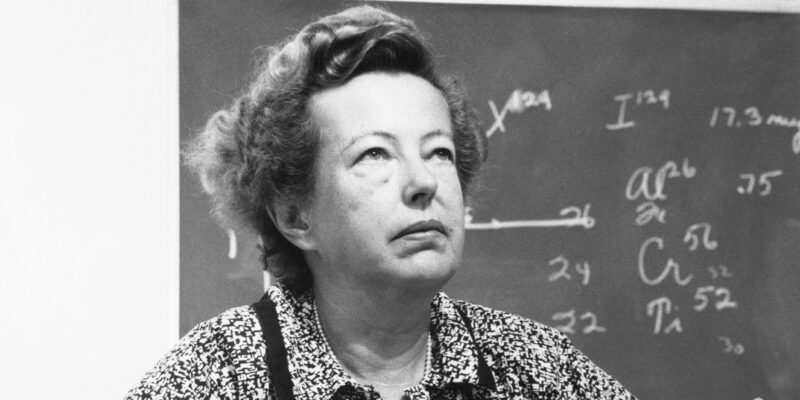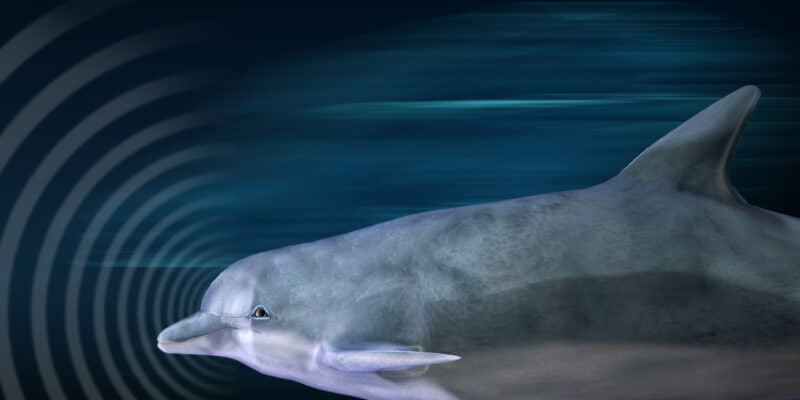From massive rockets to tiny satellites, these 37 space missions will transform our understanding of the cosmos and humanity’s place within it over the next decade. Scientists and engineers worldwide are racing to explore our solar system and beyond, with pioneering technologies that will lead us back to the Moon, forward to Mars, and deep into the mysteries of our universe.
Starship Orbital Test Flights (2025-2026)
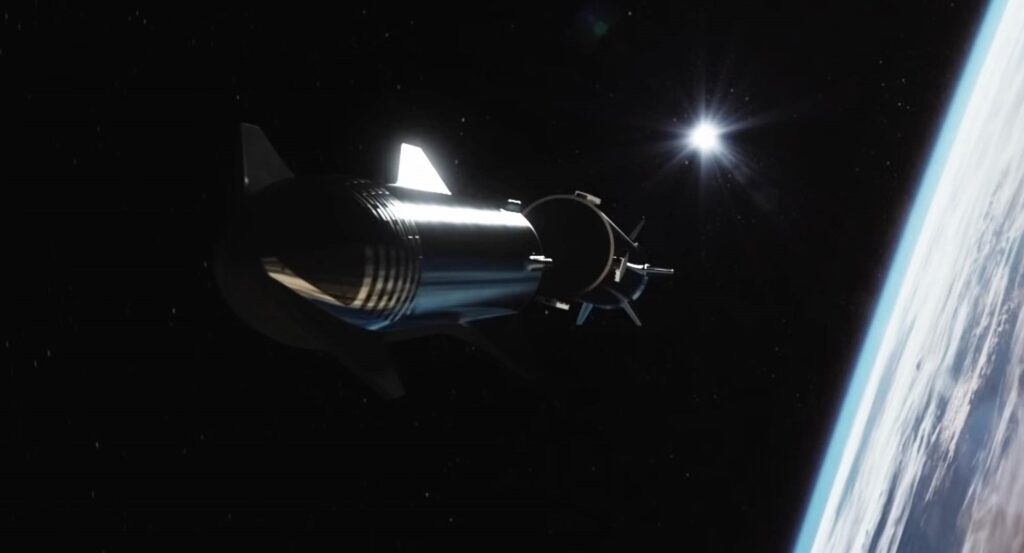
ADVERTISEMENT - CONTINUE READING BELOW
SpaceX continues pushing Starship toward regular orbital flights. The massive vehicle will refine its 33 Raptor engines that can lift 150 tons to orbit. Engineers focus on mid-air engine reignition and precision landings on ocean platforms like Phobos and Deimos. SpaceX aims to slash launch costs below $10 million per flight, making space access dramatically cheaper for everyone.
Starship Propellant Transfer Demo (Summer 2025)
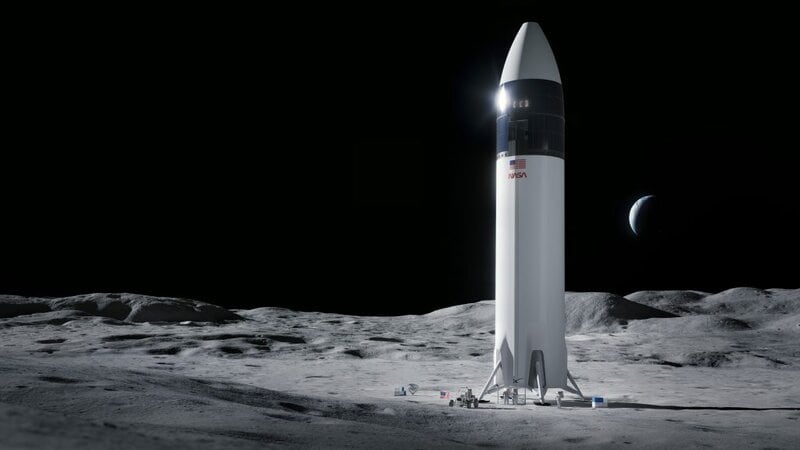
ADVERTISEMENT - CONTINUE READING BELOW
Two Starships will meet 400 km above Earth to perform a critical dance. They’ll transfer 1,200 tons of cryogenic methane and oxygen between them over several hours. This test tackles the challenge of preventing fuel boil-off in space. Success here unlocks the door to deep space travel and makes lunar missions possible by enabling orbital refueling.
Artemis III: Starship HLS Lunar Landing (2027)

ADVERTISEMENT - CONTINUE READING BELOW
NASA astronauts will touch lunar soil for the first time since Apollo, landing near the South Pole’s Shackleton Crater. The Starship Human Landing System offers a spacious 1,000 cubic feet cabin with an airlock for moonwalks. Crews will deploy solar-powered science packages to study seismic activity and ice deposits during their week-long stay on the surface.
Artemis IV: Gateway and Starship (2028)
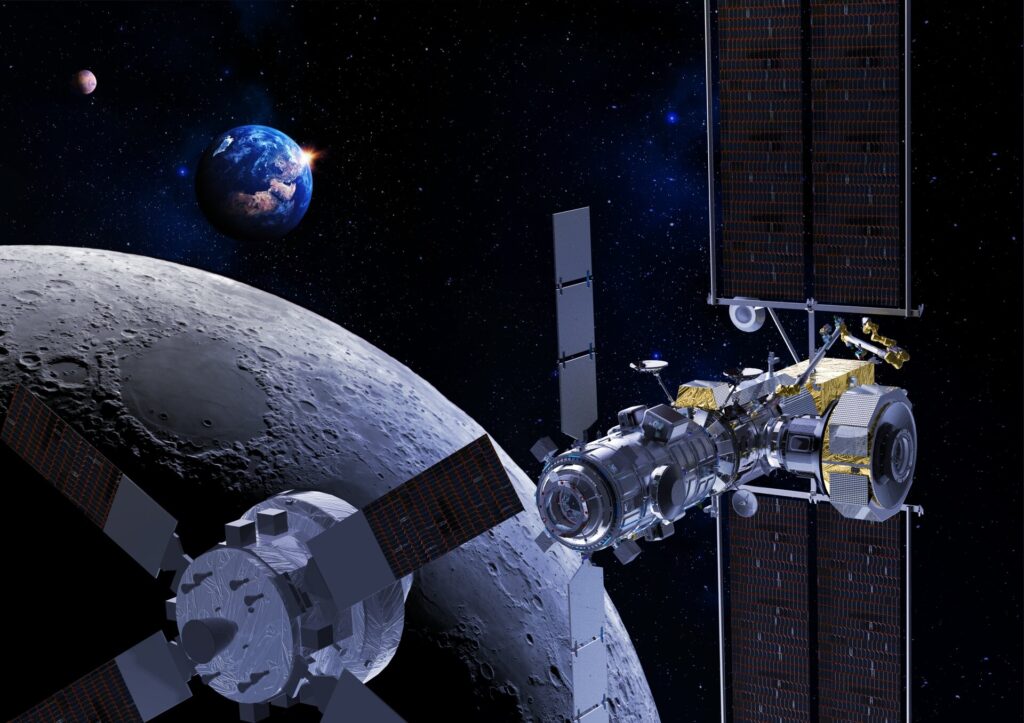
ADVERTISEMENT - CONTINUE READING BELOW
Four astronauts will dock Starship with the Lunar Gateway station. This enables month-long surface explorations from the orbital outpost. A prototype rover will scout 20 km of territory, seeking locations for a permanent Moon base. The international crew will conduct experiments from partners like ESA and JAXA on radiation shielding and growing plants in lunar gravity.
Starship Cargo Lunar Landers (2029+)
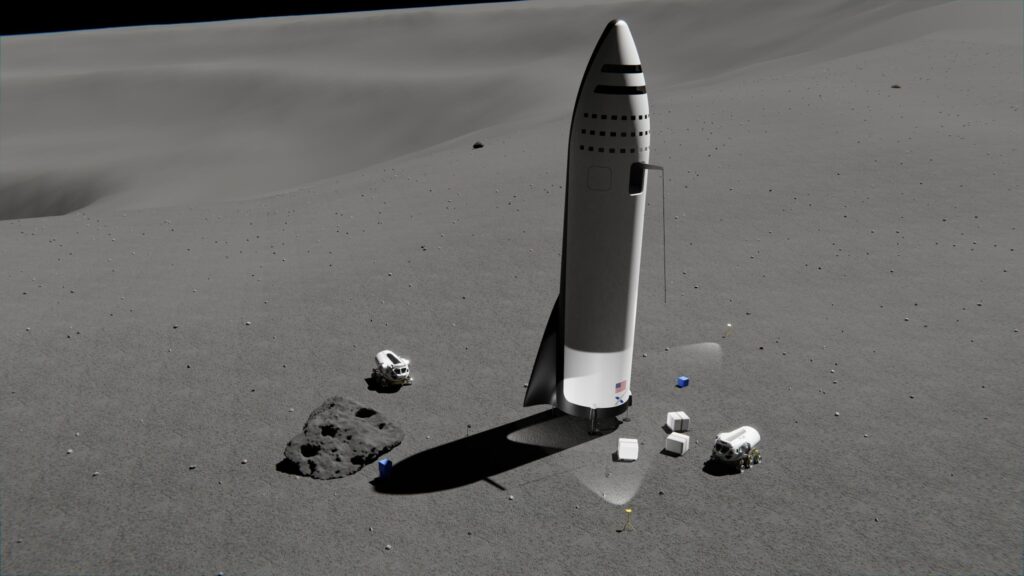
ADVERTISEMENT - CONTINUE READING BELOW
Massive 50-meter tall Human-class Delivery Landers will ferry 100-ton payloads to the Moon. Six Raptor engines will soft-land these behemoths near Artemis Base Camp. Their cargo includes Bigelow Aerospace habitats and 50 kW solar arrays for continuous daytime power. These regular supply drops will transform temporary visits into a semi-permanent lunar outpost by 2032.
Blue Origin’s Blue Moon Mark 1 Demo (2025)
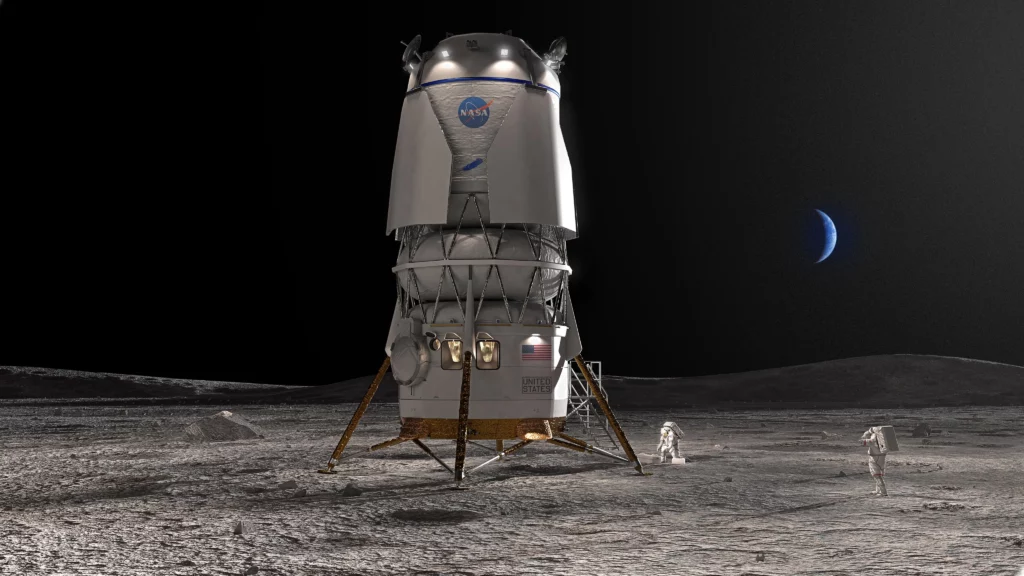
ADVERTISEMENT - CONTINUE READING BELOW
Blue Origin’s lunar lander will deliver 3.3 tons of cargo to the highlands after launching on New Glenn. The spacecraft carries a seismometer and dust mitigation experiment. Its BE-7 engine produces 10,000 pounds of hydrogen-oxygen thrust for precise touchdown. The mission puts Blue Origin’s navigation system to the test, aiming to land within 100 meters of its target.
Blue Moon Mark 2 Crewed Landing (Artemis V, 2030)
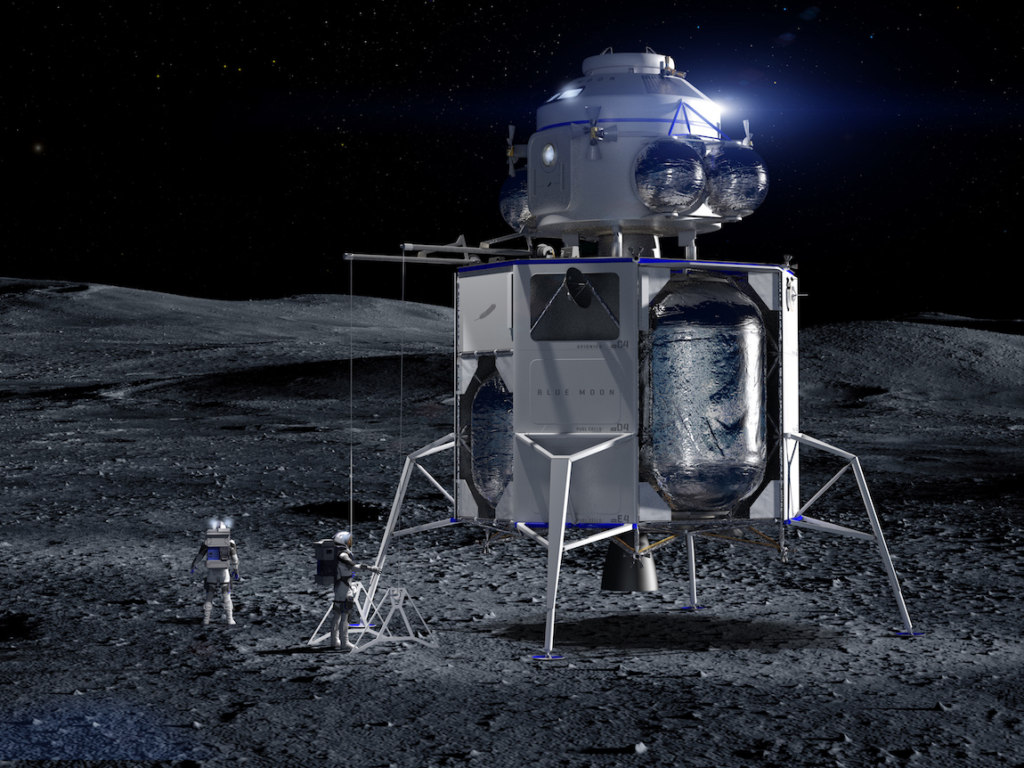
ADVERTISEMENT - CONTINUE READING BELOW
This reusable lander will carry four astronauts to the Malapert Massif region. Its spacious crew module features panoramic windows for breathtaking views. Astronauts will collect 50 kg of lunar samples for Earth analysis. The descent stage can be reused 15 times. Lockheed Martin’s ascent vehicle ensures safe return to Gateway after surface operations.
Intuitive Machines IM-2 (February 2025)
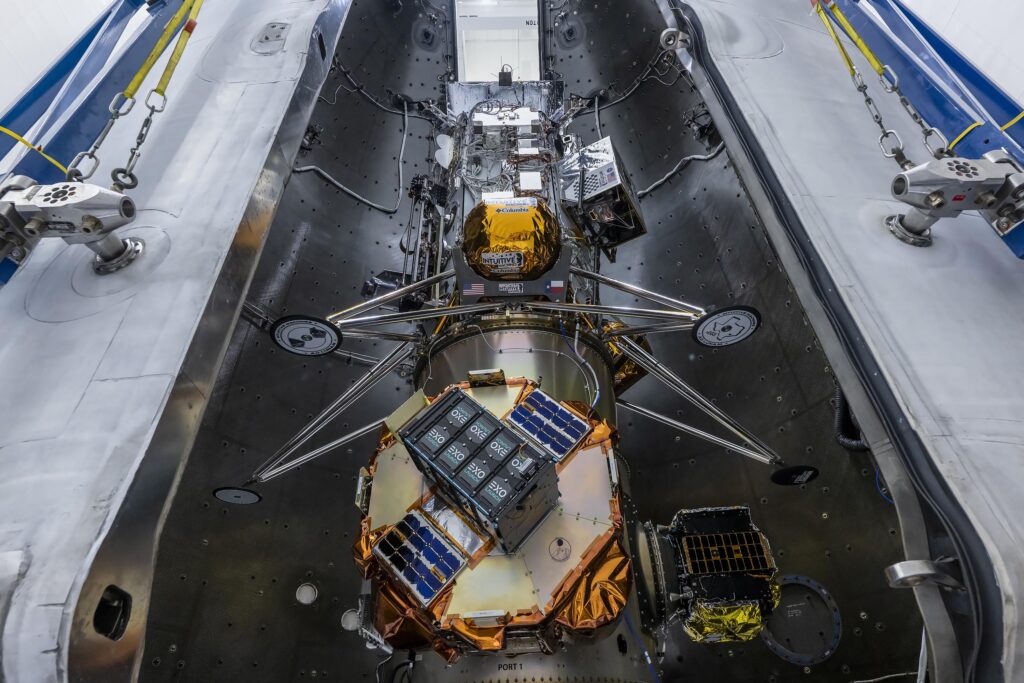
ADVERTISEMENT - CONTINUE READING BELOW
The Nova-C “Athena” lander will drill a meter into lunar soil at the South Pole. It carries NASA’s PRIME-1 experiment to extract and analyze ice from Nobile Crater. A tiny 2-kg rover will explore the landing zone, sending back 4K video of the icy terrain. Data from this mission will shape future efforts to produce water, oxygen, and fuel from lunar resources.
Firefly Aerospace Blue Ghost 1 (March 2025)
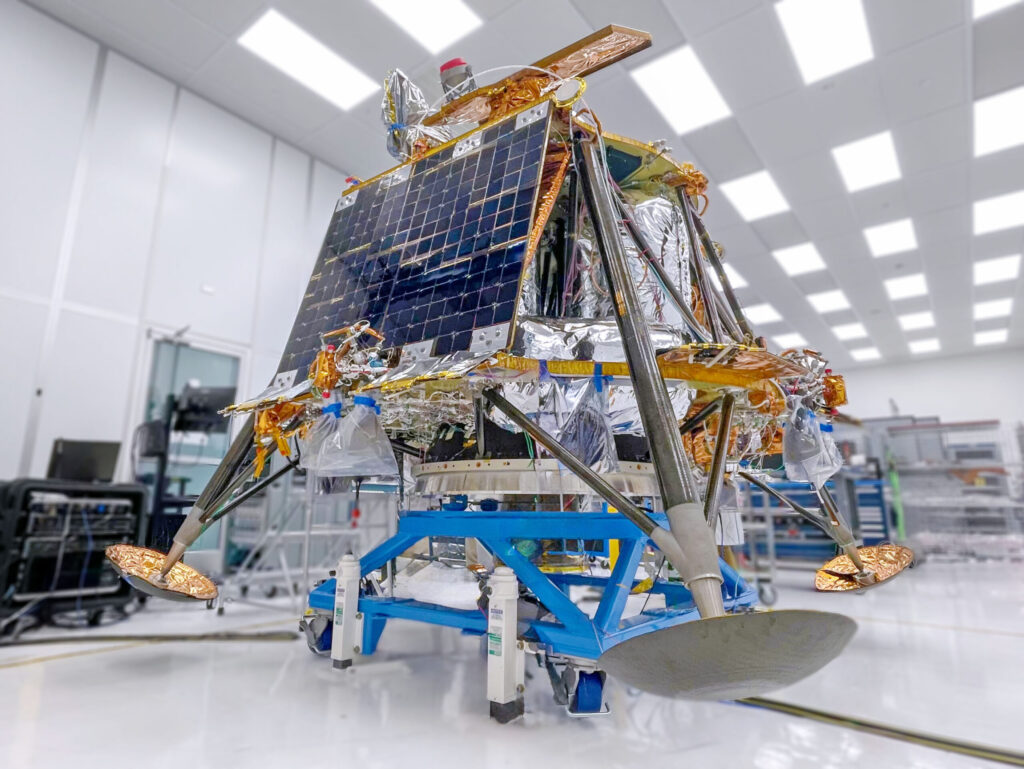
ADVERTISEMENT - CONTINUE READING BELOW
This commercial lander targets Mare Crisium with 10 NASA payloads. Scientists will study how lunar soil sticks to surfaces and measure radiation levels from solar particles. A thermometer will track soil temperature changes throughout the 14-day lunar day. Blue Ghost 1 will beam all its findings back to Earth via X-band radio signals.
Hakuto-R Mission 2 (Mid-2025)
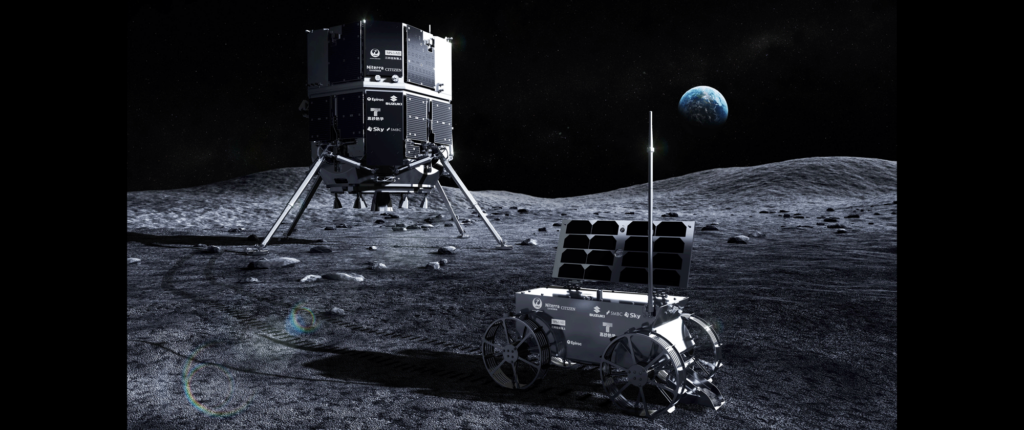
ADVERTISEMENT - CONTINUE READING BELOW
Japan’s lander will touch down in Mare Frigoris, releasing a 10-kg rover named Tenacious. The spacecraft uses a solid rocket motor for its final descent, aiming to land within a 500-meter target zone. The rover will test new wheel designs for moving through loose moon dust. This mission builds on earlier attempts to refine Japan’s lunar technology.
Lunar Trailblazer (2025-2026)
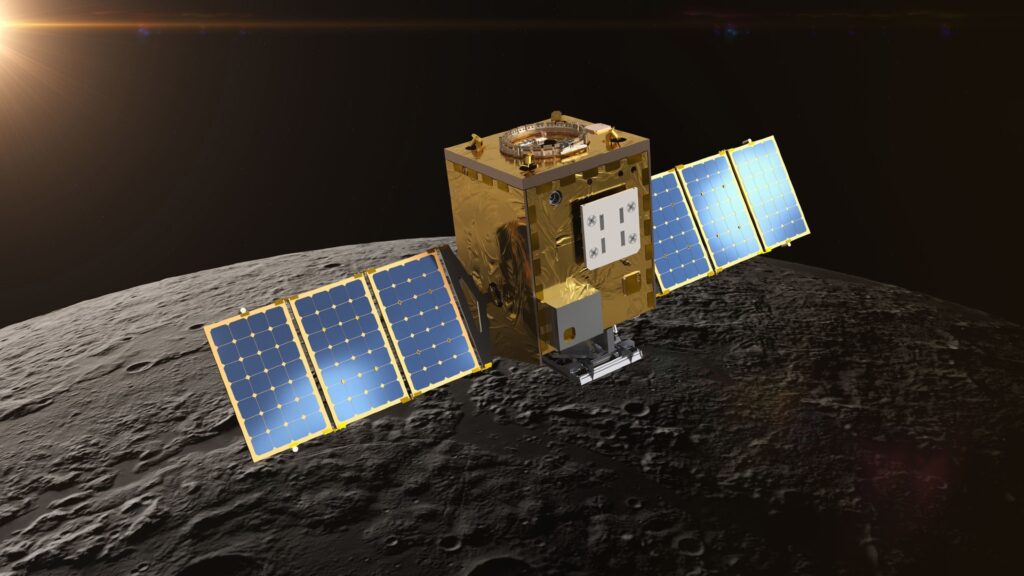
ADVERTISEMENT - CONTINUE READING BELOW
This compact 200-kg satellite will orbit 100 km above the Moon. Its infrared spectrometer will create maps showing water distribution across the surface. The High-Resolution Volatiles and Minerals Moon Mapper can detect water concentrations as low as 1%. This information will guide Artemis planners to choose landing sites near ice-rich regions for future resource use.
Artemis VI and Beyond: Starship Evolution (2030s)

ADVERTISEMENT - CONTINUE READING BELOW
Advanced Starships will support larger crews and more ambitious lunar construction projects. They’ll feature reinforced heat shields and expanded cabins for 12 astronauts. A 100-meter radio telescope will be deployed on the far side, shielded from Earth’s radio noise. By 2035, these missions could support a rotating crew of 20 people at a permanent Moon base.
China’s Chang’e 7 (2026)
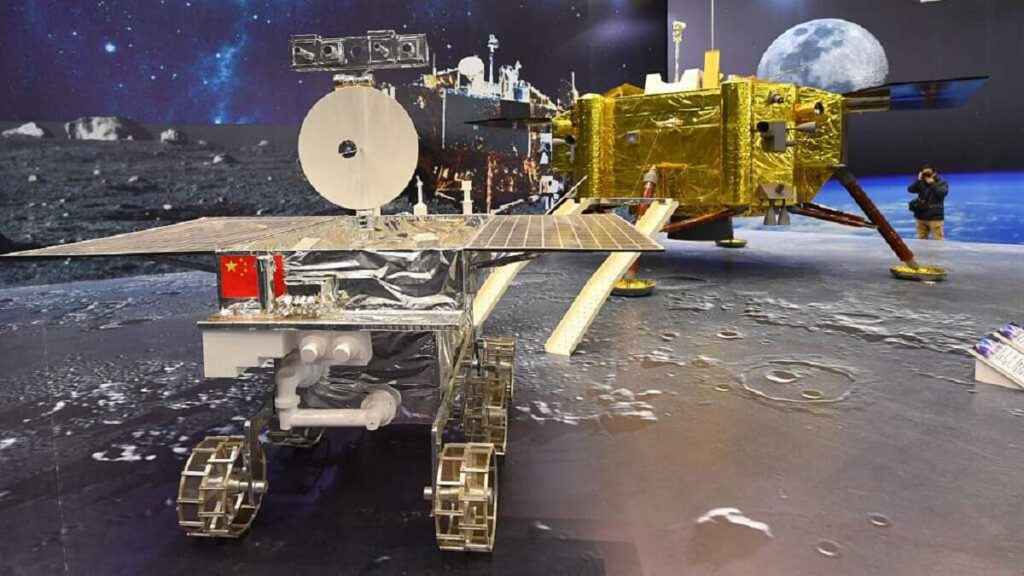
ADVERTISEMENT - CONTINUE READING BELOW
China will send an orbiter, lander, and rover to study the South Pole-Aitken Basin. The orbiter’s LIDAR system will map topography with 1-meter resolution over a year-long mission. A 50-kg rover will use ground-penetrating radar to search for ice up to 10 meters below the surface. This mission advances China’s plans for a research station by 2035.
Chang’e 8 (2028)
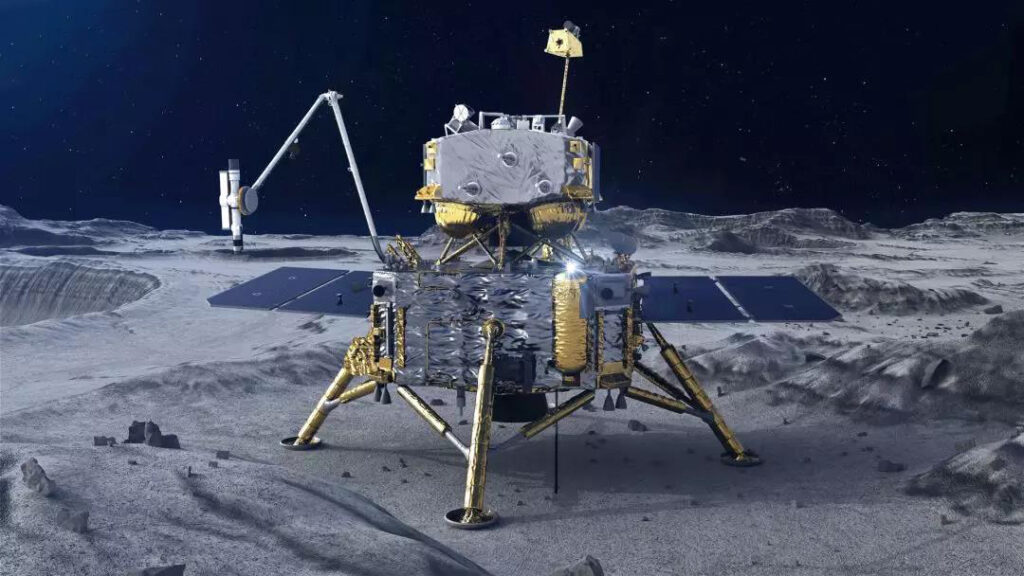
ADVERTISEMENT - CONTINUE READING BELOW
This Chinese mission will test 3D printing with lunar soil. The lander carries a 100-kg payload including a mini-furnace that melts regolith at 1,200°C to produce small building bricks. A solar-powered unit will split water ice into oxygen and hydrogen for fuel testing. Chang’e 8 lays groundwork for the International Lunar Research Station built with Russian collaboration.
Russia’s Luna 26 (2027)
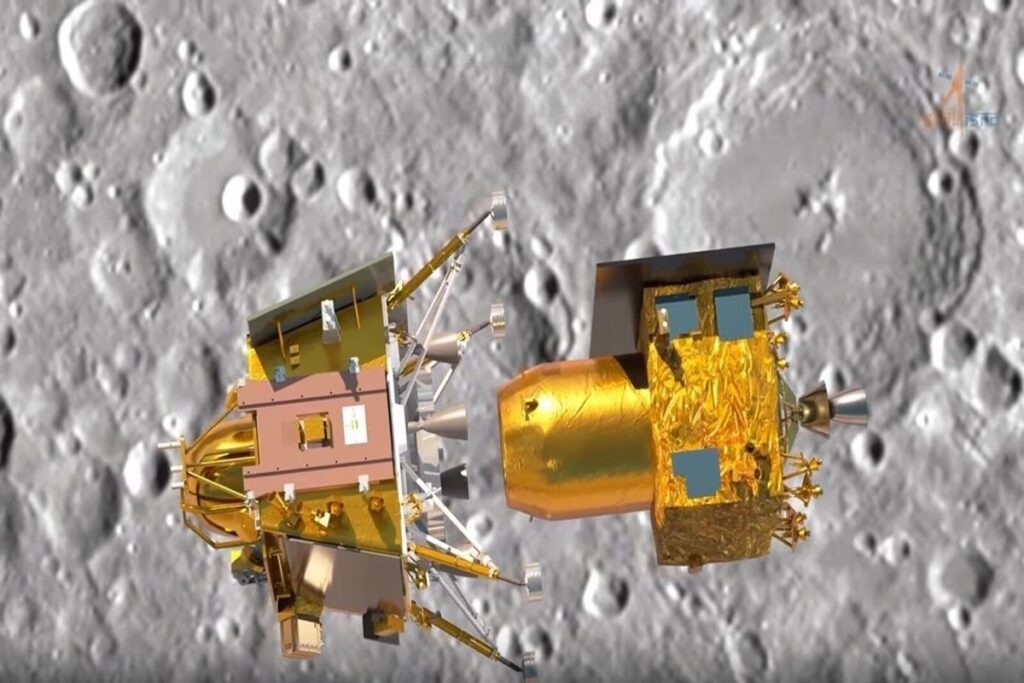
ADVERTISEMENT - CONTINUE READING BELOW
Russia’s lunar orbiter will map the surface from 150 km altitude. Its gamma-ray spectrometer will detect mineral deposits during an 18-month mission. The spacecraft carries a magnetometer to study the Moon’s weak magnetic field and its interaction with solar wind. Luna 26 helps Russia prepare for its contribution to the International Lunar Research Station.
Luna 27 (2028)
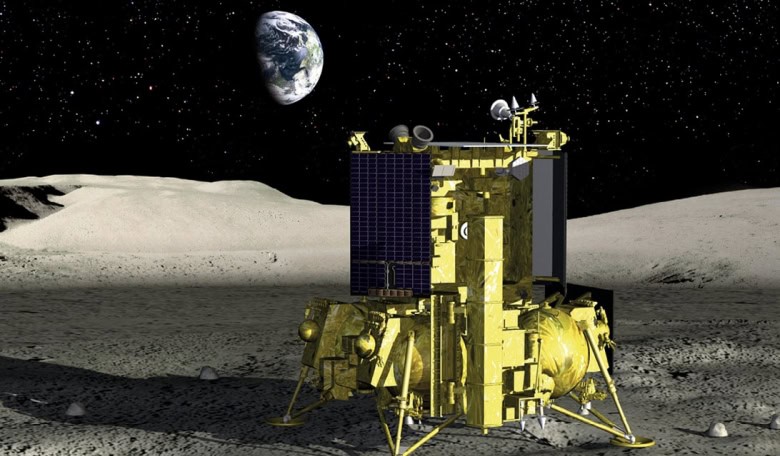
ADVERTISEMENT - CONTINUE READING BELOW
This Russian lander will drill two meters into the South Pole near Boguslawsky Crater. The European-built Prospector drill will extract samples for an onboard mass spectrometer. Radioisotope heaters will power the spacecraft through the year-long mission. Scientists will use the data to create detailed maps of lunar water distribution for planning future resource use.
James Webb Space Telescope (Ongoing-2030s)
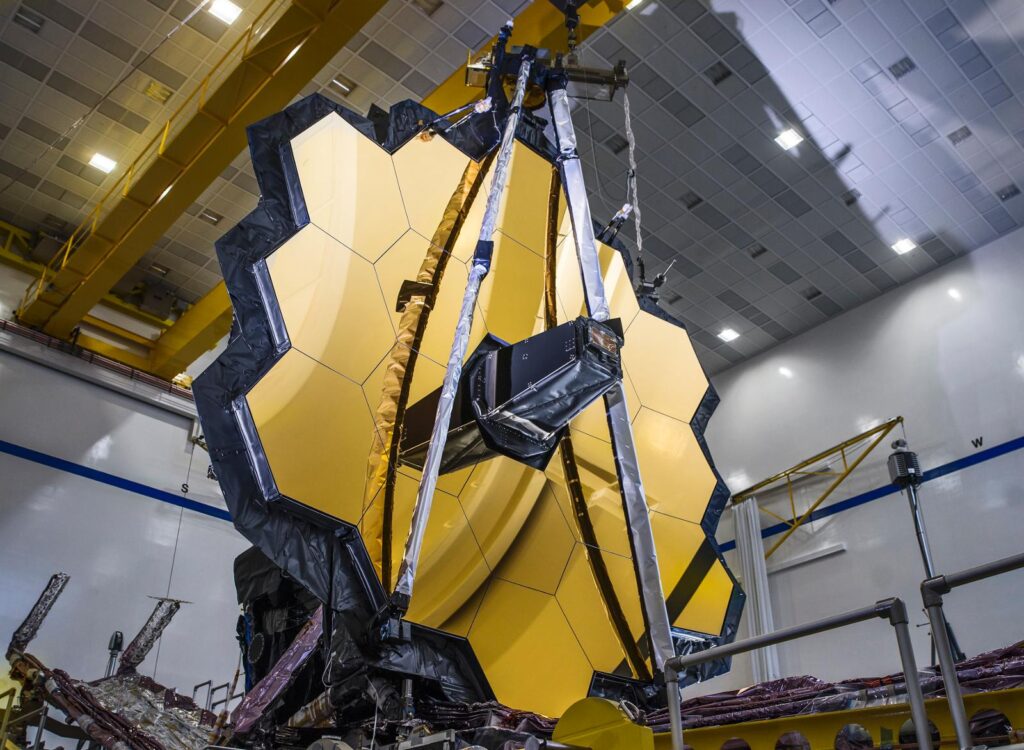
ADVERTISEMENT - CONTINUE READING BELOW
Webb continues revolutionizing astronomy with its 6.5-meter gold-plated mirror. The Near-Infrared Camera captures images of galaxies from 13 billion years ago, revealing the cosmic dawn. By 2030, it could detect biological signatures in the atmospheres of more than 50 exoplanets. The telescope will operate until its coolant depletes around 2035.
Nancy Grace Roman Space Telescope (2027)
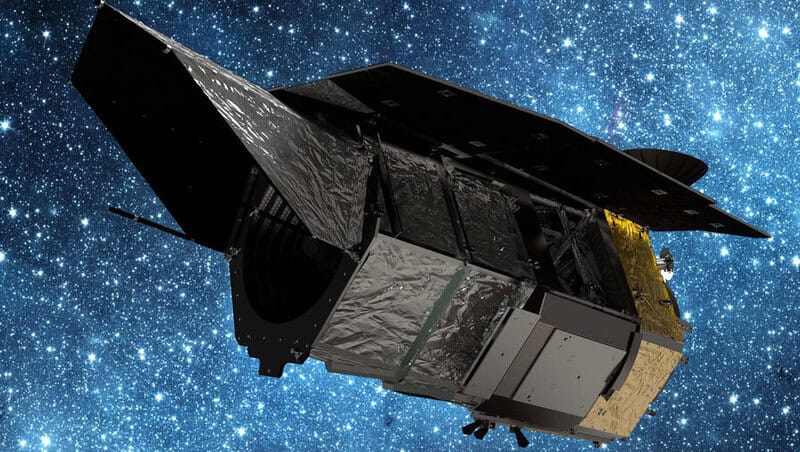
ADVERTISEMENT - CONTINUE READING BELOW
This infrared telescope will scan 2,000 square degrees of sky, hunting for dark energy and exoplanets. Its 2.4-meter mirror and coronagraph will identify Earth-like worlds around nearby stars. Roman collects data 100 times faster than Hubble, mapping 1 billion galaxies in five years. A Falcon Heavy will launch it to L2 orbit for a 10-year mission.
Vera C. Rubin Observatory (2025)
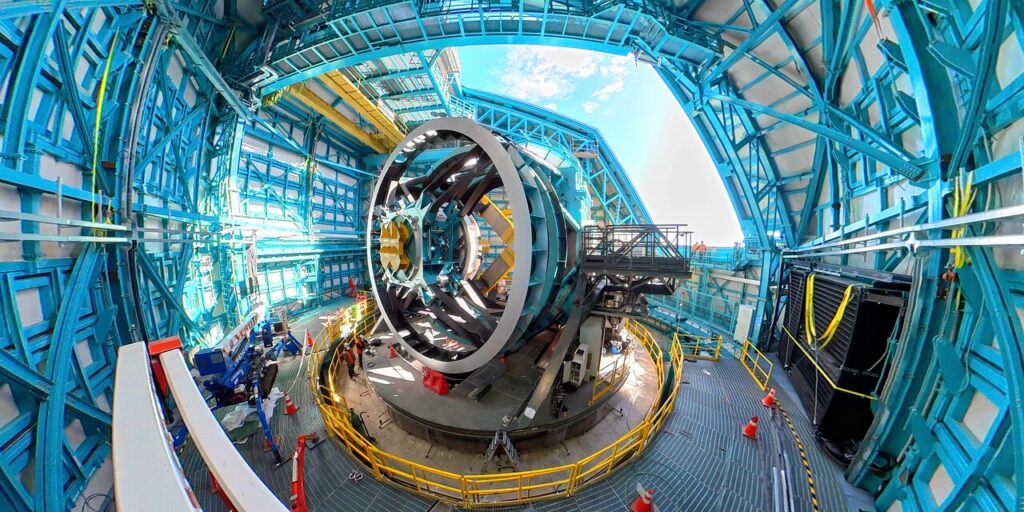
ADVERTISEMENT - CONTINUE READING BELOW
This ground-based 8.4-meter telescope in Chile will transform our cosmic view. It takes 15-second exposures every 20 seconds, covering the entire sky every three nights. The 3.2-gigapixel camera detects supernovae and asteroids, generating 10 million alerts each night. Scientists will use this data to refine dark matter models and cosmic expansion rates by 2030.
Europa Clipper (Arrives 2030)
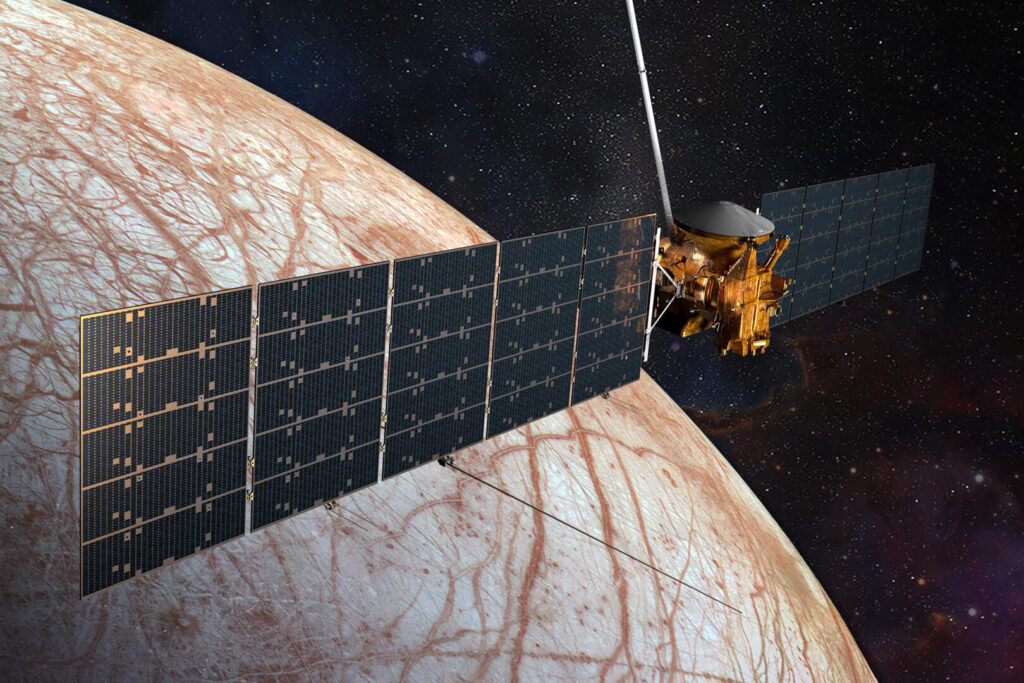
ADVERTISEMENT - CONTINUE READING BELOW
After launching in October 2024, this spacecraft will reach Jupiter’s moon Europa in 2030. It will perform 50 flybys, using radar to map the ice shell thickness estimated at 10-30 km. A mass spectrometer will analyze plumes for organic molecules and salts that might hint at life. The mission takes 5.5 years to reach Jupiter.
Dragonfly (Launch 2028, Titan 2034)
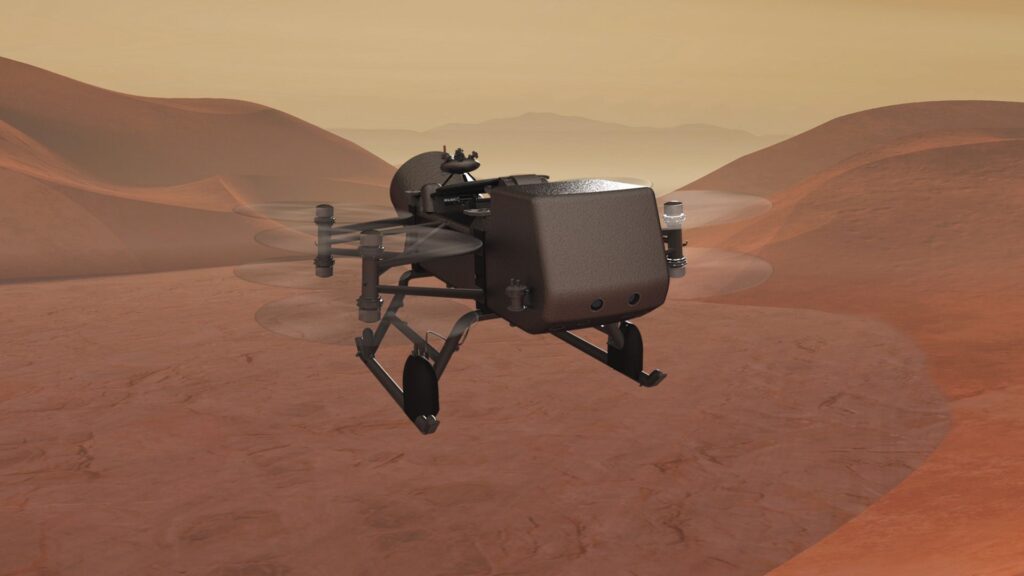
ADVERTISEMENT - CONTINUE READING BELOW
This rotorcraft will explore Saturn’s moon Titan, flying 8 kilometers per hop with eight rotors. Nuclear power from an MMRTG will keep it running through the frigid conditions. DragonCam will photograph methane lakes and dunes while a neutron spectrometer analyzes subsurface organics. After a 6-year journey, it will land in Titan’s Shangri-La dune fields.
Mars Sample Return (Late 2020s-Early 2030s)
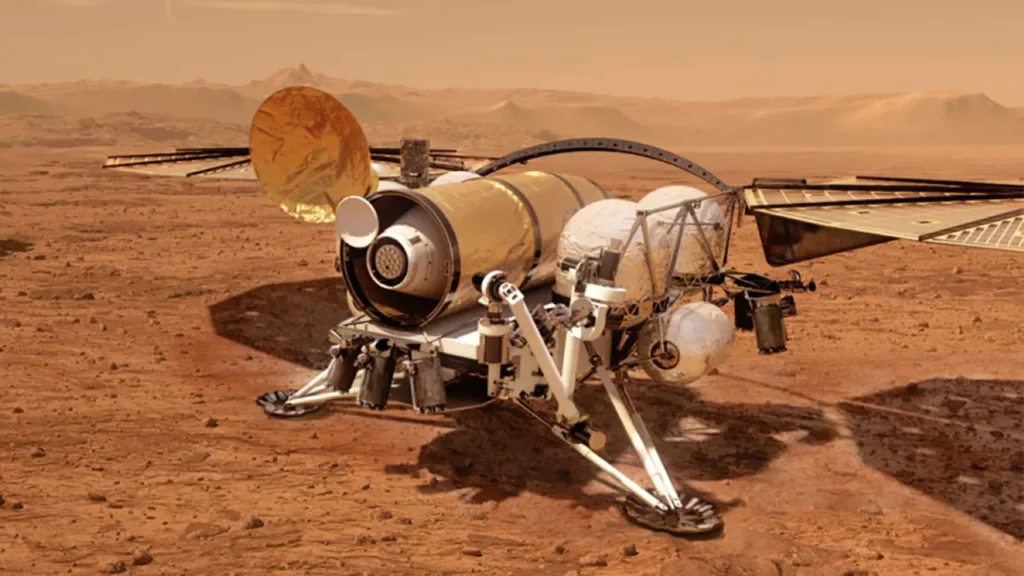
ADVERTISEMENT - CONTINUE READING BELOW
NASA and ESA will collaborate to bring Martian samples back to Earth. A Sample Fetch Rover will collect cached samples from Perseverance in Jezero Crater. An ascent vehicle will launch 5 kg of material to an orbiter that returns them by 2033. Starship might reduce costs by launching the 50-ton orbiter in a single flight.
Starship Mars Test Flights (Late 2020s)
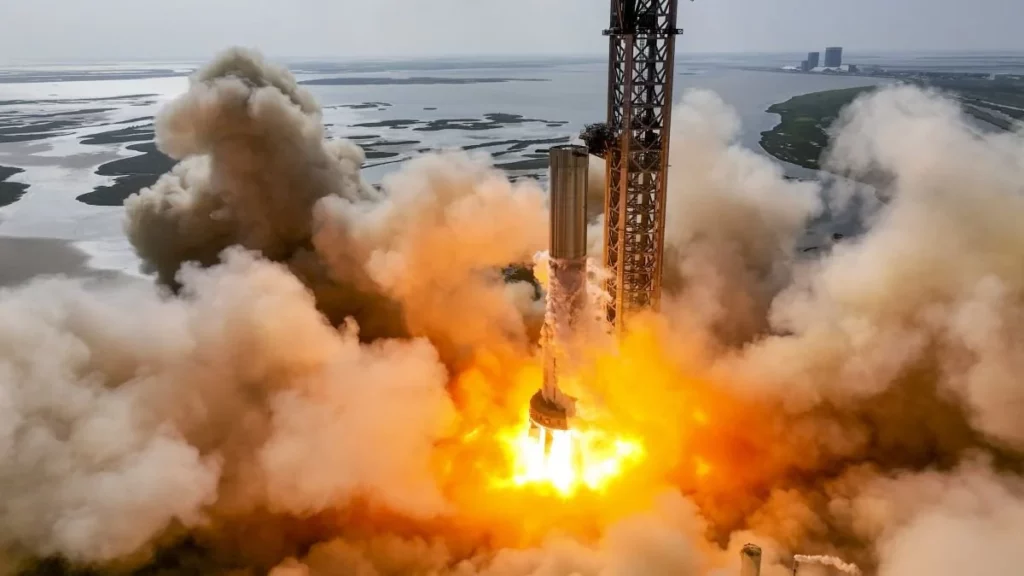
ADVERTISEMENT - CONTINUE READING BELOW
SpaceX plans to send uncrewed Starships to Mars carrying 100 tons of equipment each. Cargo will include solar panels and Sabatier reactors for making methane fuel from CO2. Landings will target Utopia Planitia using Raptor engines for precise touchdowns. Success will prove Starship’s capability to support human missions to the red planet by 2030.
Lunar Gateway Completion (Late 2020s)
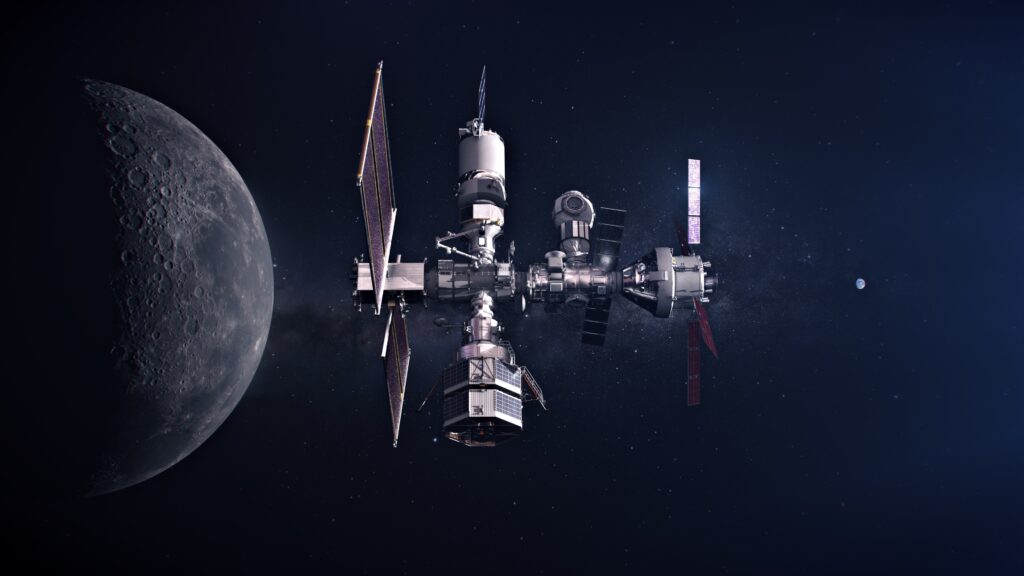
ADVERTISEMENT - CONTINUE READING BELOW
This space station will support lunar missions from its 7-day orbit. The Power and Propulsion Element generates 60 kW of solar power. The Habitation and Logistics Outpost houses four astronauts for 90-day stays. A Canadian robotic arm will assist with spacecraft docking and maintenance. The completed Gateway will serve as a staging point for deep space missions by 2029.
SPHEREx Observatory (February 2025)
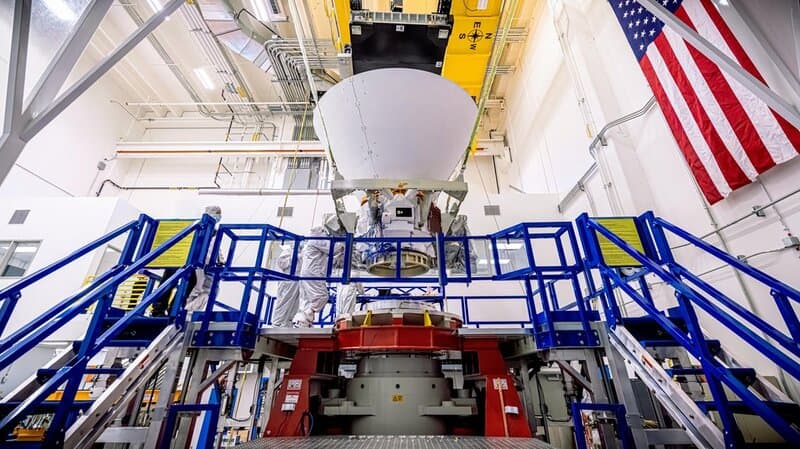
ADVERTISEMENT - CONTINUE READING BELOW
This mission will survey 450 million galaxies in near-infrared light, studying cosmic inflation and the origins of life’s building blocks. Its 20-cm telescope captures images in 96 wavelengths, completing two all-sky surveys in six months. From its 700-km Sun-synchronous orbit, SPHEREx will identify the seeds of galaxy clusters from the universe’s earliest moments.
PUNCH Mission (March 2025)
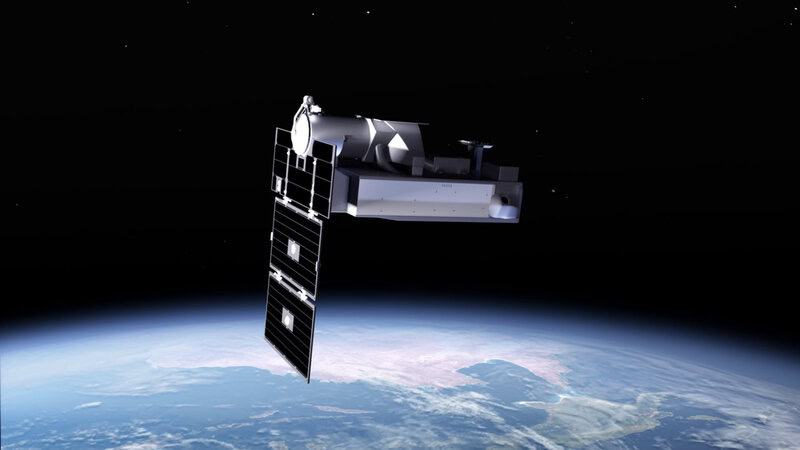
ADVERTISEMENT - CONTINUE READING BELOW
Four small satellites will create 3D images of the Sun’s corona and solar wind. Each 25-kg CubeSat carries a wide-field imager viewing the corona from 1.5 to 10 solar radii. From their 570-km orbit, they’ll provide continuous monitoring of solar activity. The data will improve predictions of geomagnetic storms that affect Earth’s infrastructure.
Japanese M2/Resilience Mission (2025)
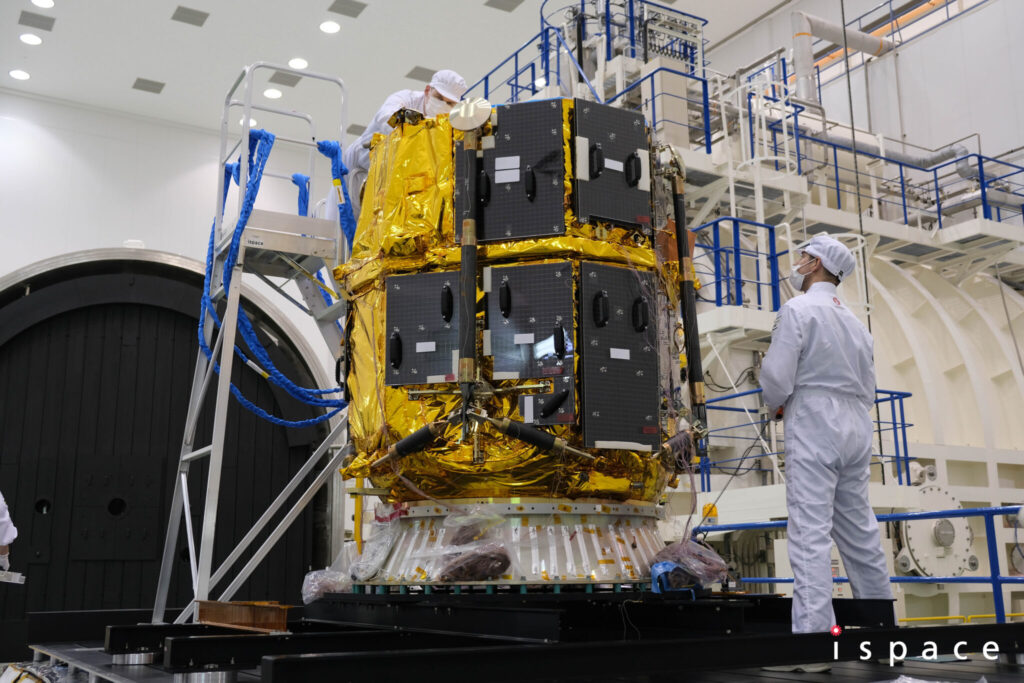
ADVERTISEMENT - CONTINUE READING BELOW
Japan will test water-splitting technology on the Moon. The 15-kg Sorato-II rover will carry a one-liter water sample to demonstrate fuel production during its two-week mission. The lander will target the volcanic Marius Hills region after a rideshare launch on a Falcon 9. Results will shape JAXA’s roadmap for supporting lunar bases by 2030.
India’s Chandrayaan-4 (2028)
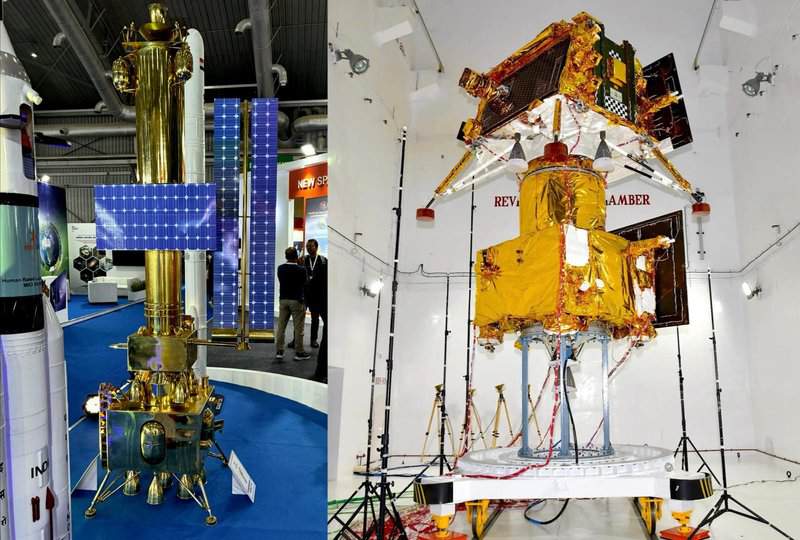
ADVERTISEMENT - CONTINUE READING BELOW
India aims to collect 3 kg of regolith from the lunar South Pole. An LVM-3 rocket will deliver a lander and ascent vehicle near Shiv Shakti Point. A robotic arm will gather ice-rich samples, analyzed by an X-ray spectrometer before return to Earth. This mission strengthens India’s role in international Artemis partnerships while advancing its space capabilities.
Griffin Mission 1 (Fall 2025)
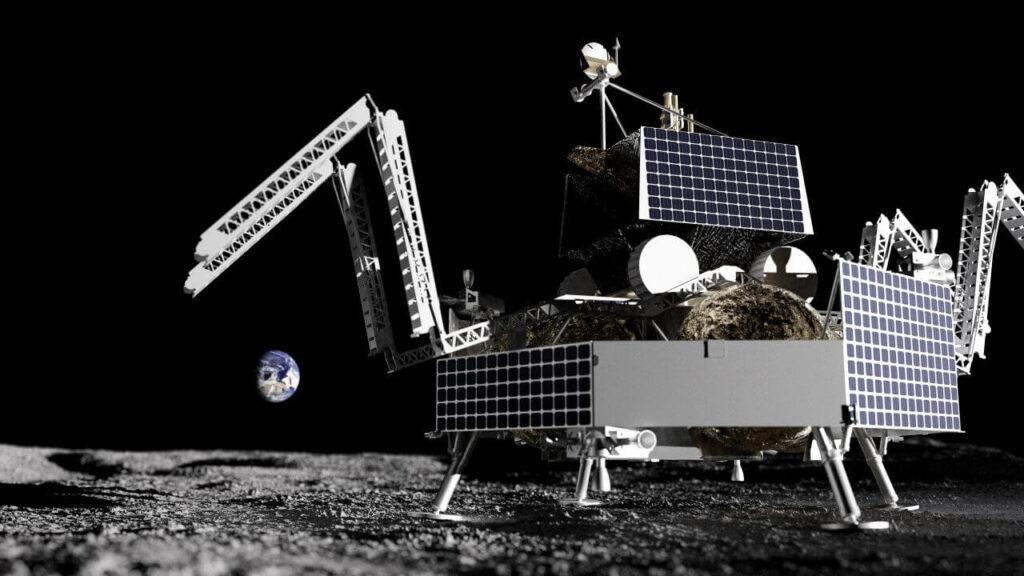
ADVERTISEMENT - CONTINUE READING BELOW
Astrobotic’s 500-kg Griffin lander will touch down near the Gruithuisen Domes, carrying a 100-kg VIPER rover precursor. Hypergolic fuels power its engines for a soft landing with 10-meter accuracy. The mission will test communication relays that future lunar operations will depend on. NASA’s Commercial Lunar Payload Services program supports this private venture.
Lunar Pathfinder (2025)
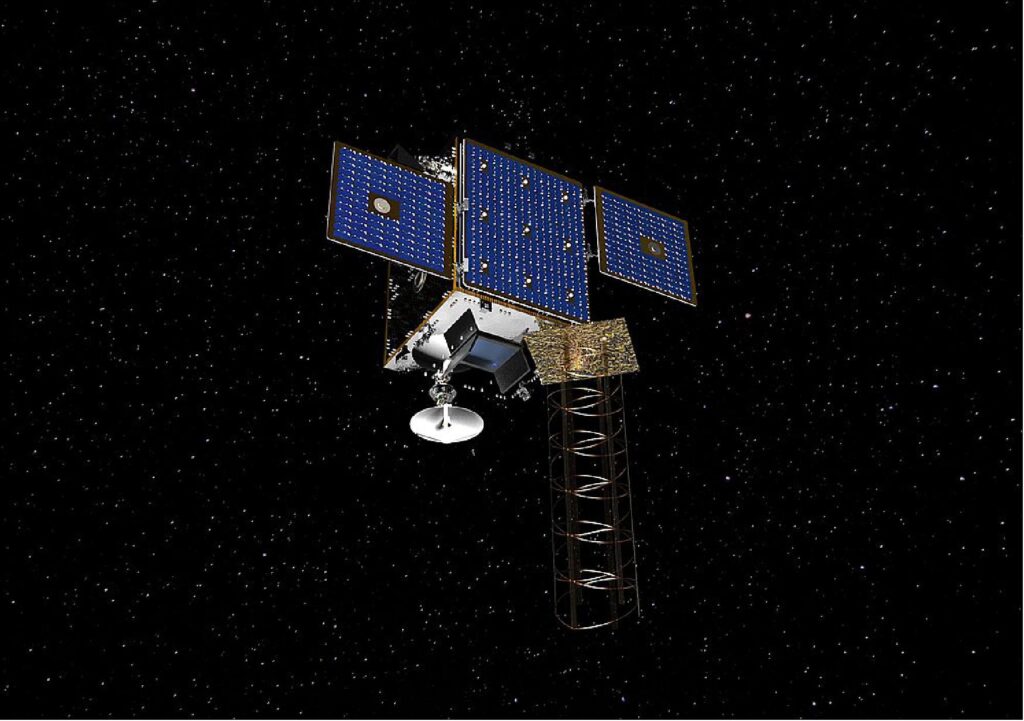
ADVERTISEMENT - CONTINUE READING BELOW
This 400-kg satellite will orbit 200 km above the Moon, providing high-bandwidth communications for surface missions. Built by SSTL, it offers 100 Mbps data rates through S-band and X-band frequencies. The system provides real-time positioning accurate to 10 meters. After its commercial launch, Pathfinder will operate for five years, supporting the growing lunar economy.
Axiom Station Lunar Missions (Late 2020s)
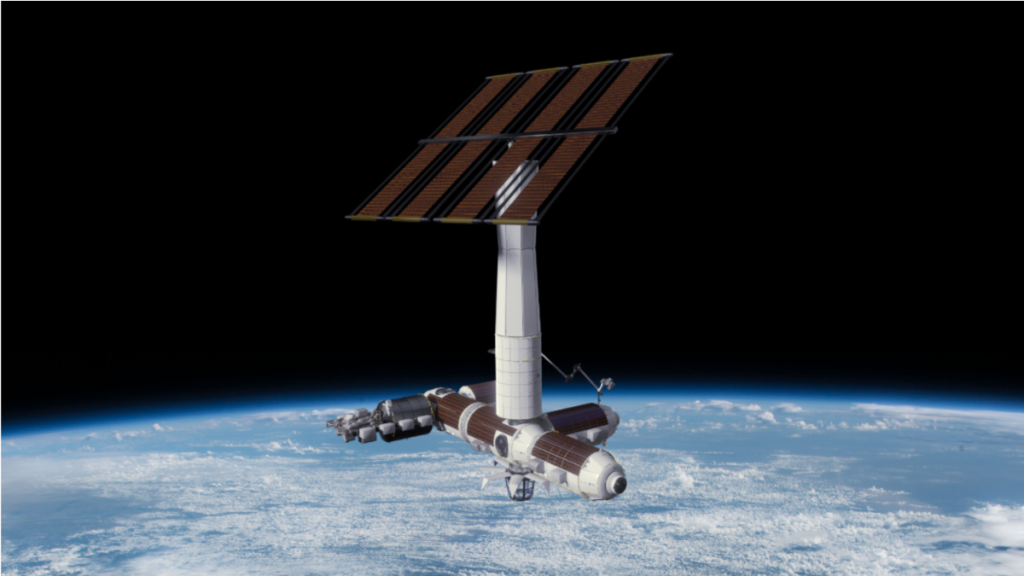
ADVERTISEMENT - CONTINUE READING BELOW
Private companies will offer commercial lunar trips using Starship or similar vehicles. Axiom’s lunar module will dock with its space station before lunar journeys. Crews will study lunar concrete and zero-gravity manufacturing, funded by private investors. By 2030, Axiom plans to host 50 tourists annually on these groundbreaking trips to our nearest neighbor.
Square Kilometre Array (SKA, 2027+)
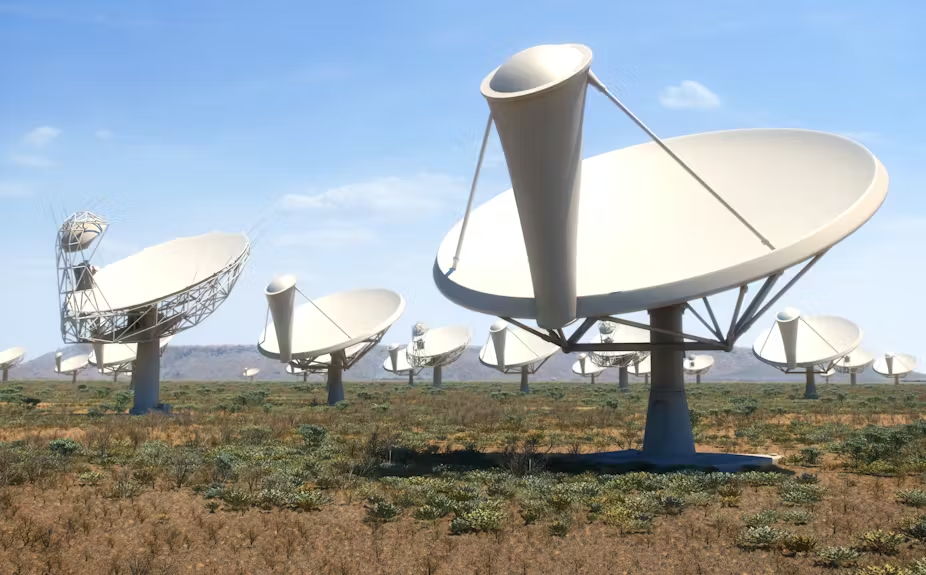
ADVERTISEMENT - CONTINUE READING BELOW
This massive radio telescope network spans Australia and South Africa. SKA-Low will detect hydrogen signals from 13 billion years ago with 131,000 antennas. The array achieves 100 times the sensitivity of current telescopes by 2030. Scientists will map cosmic magnetic fields and test Einstein’s theories near black holes with unprecedented precision.
Xuntian Space Telescope (2026)

ADVERTISEMENT - CONTINUE READING BELOW
China’s Hubble-class telescope features a 2-meter mirror and 2.5-gigapixel camera. Orbiting near the Tiangong space station, it will survey 40% of the sky during its seven-year mission. Scientists expect to catalog 10 billion galaxies and detect gravitational lensing events. Xuntian complements Webb by providing rapid, wide-field imaging of cosmic phenomena.
Starship Crewed Mars Mission (Early 2030s)
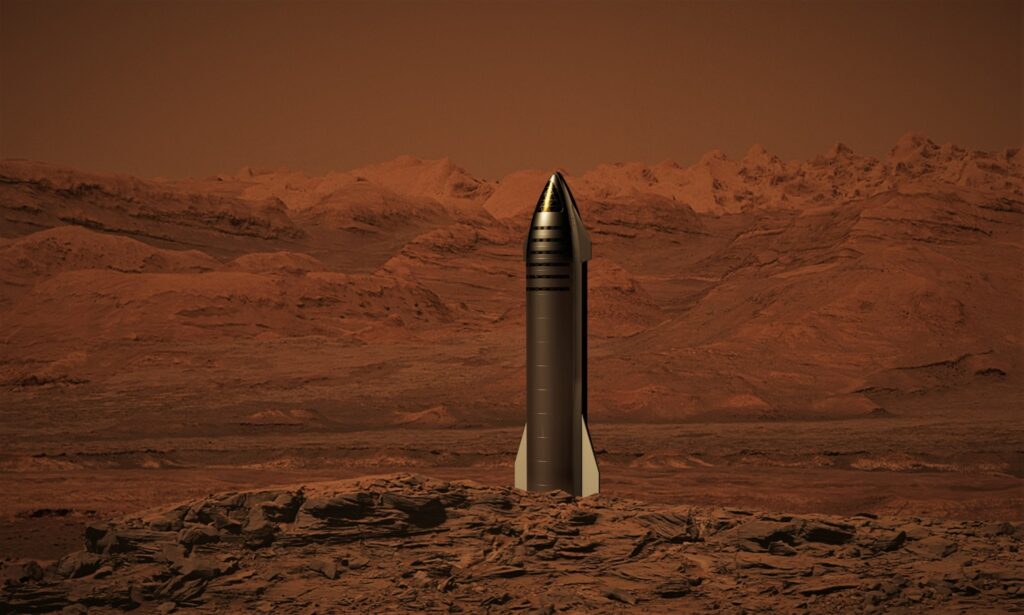
ADVERTISEMENT - CONTINUE READING BELOW
Elon Musk’s vision could become reality during the 2033 Mars launch window. A crew of 100+ pioneers would spend 500 days on the surface, building habitats and greenhouses. The ship provides 1,000 cubic meters of living space with radiation shielding and hydroponic systems. Return flights will use methane and oxygen produced from Martian ice.
Laser Interferometer Space Antenna (LISA, 2035)
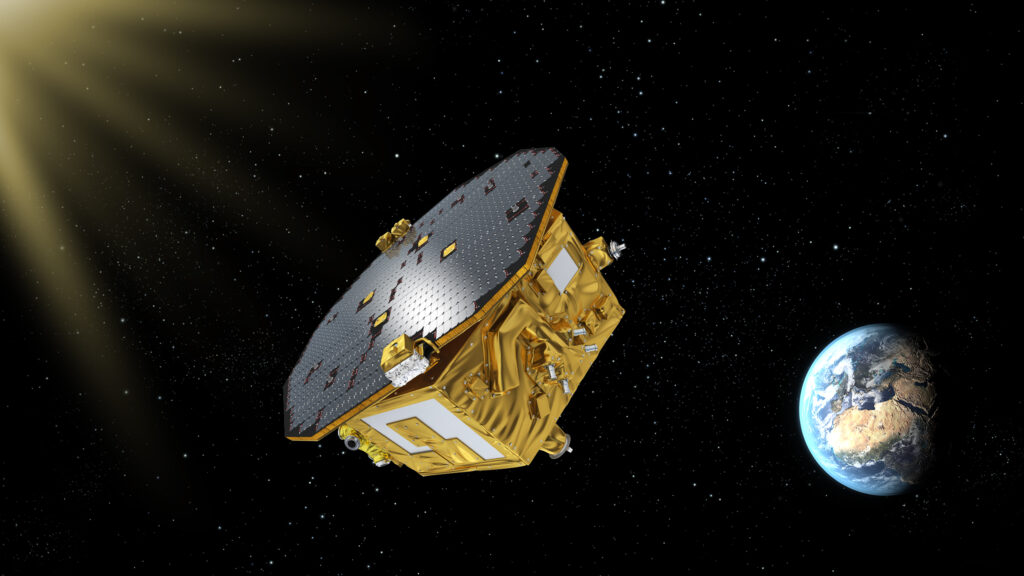
ADVERTISEMENT - CONTINUE READING BELOW
Three spacecraft flying in a triangle 2.5 million kilometers apart will detect gravitational waves from merging black holes. Launching on an Ariane 6, LISA will orbit the Sun at Earth’s distance. Its 10-year mission will probe cosmic events dating back to the first trillionth of a second after the Big Bang, opening a new window into universe formation.
Polar Resources Ice Mining Experiment-1 (PRIME-1, 2025)
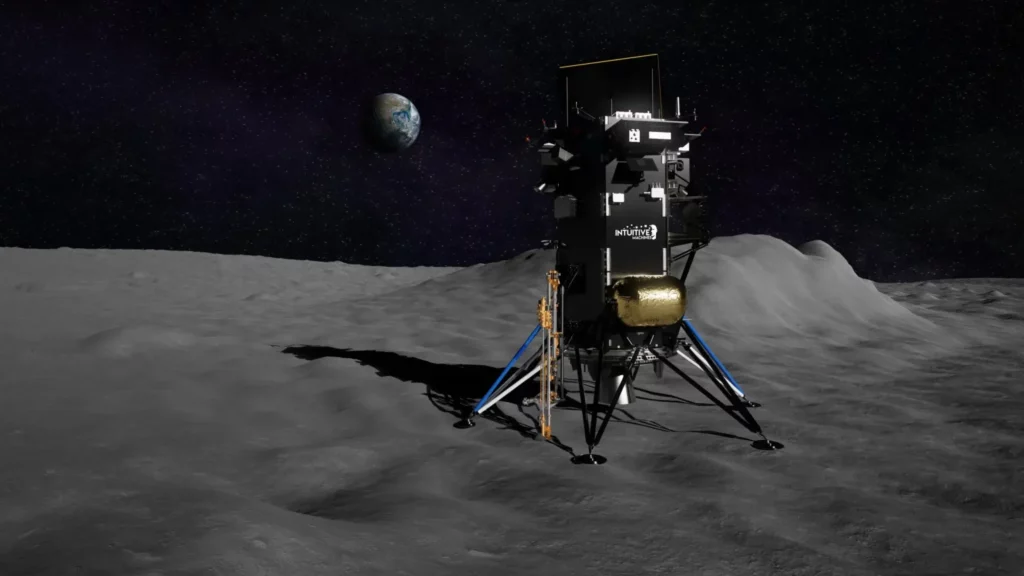
ADVERTISEMENT - CONTINUE READING BELOW
This payload aboard IM-2 will assess lunar water ice with a one-meter drill. TRIDENT will extract a kilogram of icy regolith from Nobile Crater. NIRVSS sensors measure water content down to 0.1% concentration. The data supports NASA’s goal of producing 10 tons of water annually by 2030, enabling sustainable lunar presence through resource utilization.
Starship Lunar Base Deployment (Mid-2030s)
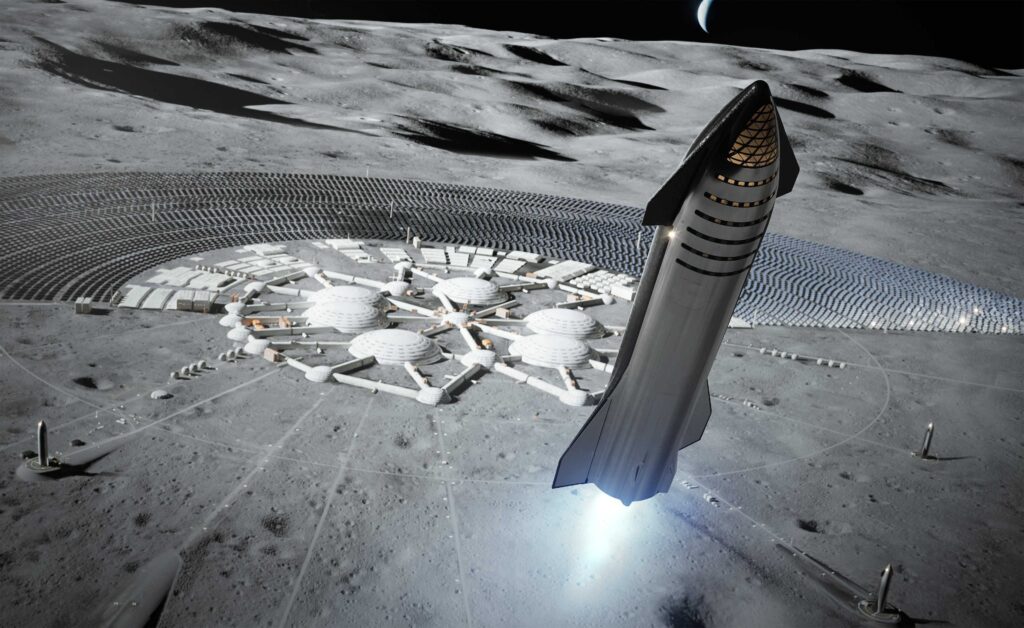
ADVERTISEMENT - CONTINUE READING BELOW
Starship could deliver the components for a permanent Moon colony. Each flight will land a 20-ton habitat module near the South Pole. Connected modules will create a 500-square-meter base powered by a 100-kW nuclear reactor during the two-week lunar night. This outpost might house 50 residents by 2035, supporting science and commercial mining operations.
The Era of Space Exploration Has Just Begun
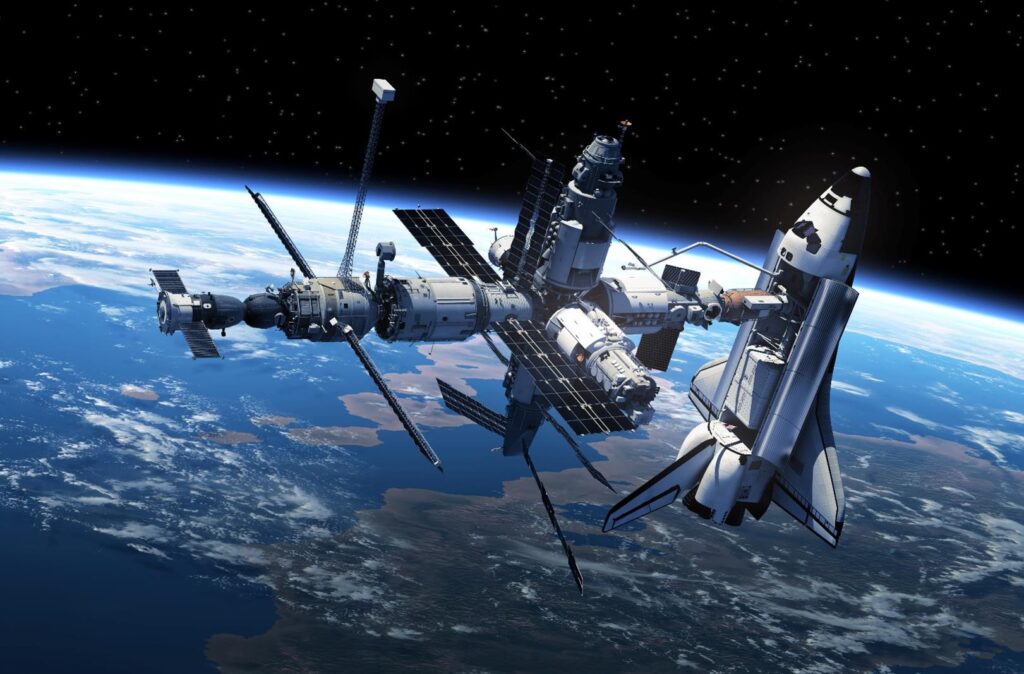
ADVERTISEMENT - CONTINUE READING BELOW
These 37 missions represent just the beginning of humanity’s expanded presence beyond Earth. From robotic explorers to human outposts, the next decade promises unprecedented discoveries about our solar system and beyond. The technologies developed for these missions will transform life on Earth while extending our reach to the stars. Space exploration has entered its golden age, with each mission building upon the last to create a sustainable cosmic future.
Many brilliant minds in history displayed traits we now tie to autism spectrum disorder: intense focus, social oddities, and unique thinking. Before autism was identified in the 20th century, these were often called eccentricity or genius. Psychiatrist Michael Fitzgerald, in a 2008 study in the Journal of Autism and Developmental Disorders, argues that such traits appear often among exceptional figures, hinting some might have been autistic. Here’s a look at 39 whose behaviors suggest they could have been on the spectrum.
Albert Einstein: Physics Revolutionary
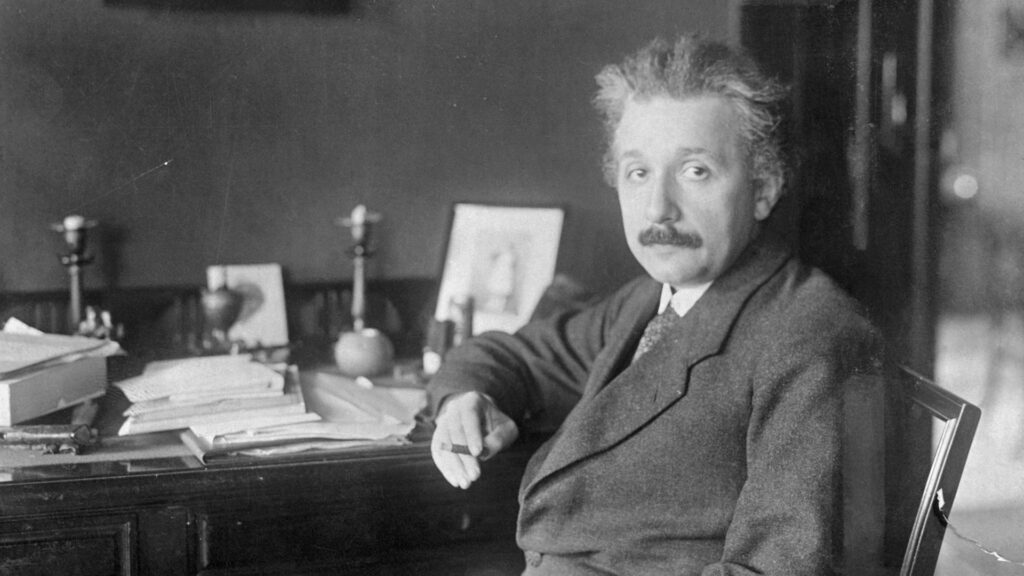
ADVERTISEMENT - CONTINUE READING BELOW
Einstein didn’t speak fluently until age four and repeated sentences obsessively until seven. As an adult, he forgot to eat during intense thought experiments and avoided small talk whenever possible. His social awkwardness puzzled contemporaries. Yet his brain revolutionized our understanding of physics. Some psychiatrists point to these traits as classic autism markers, while others see them simply as aspects of his extraordinary intellect.
Isaac Newton: Solitary Scientific Genius
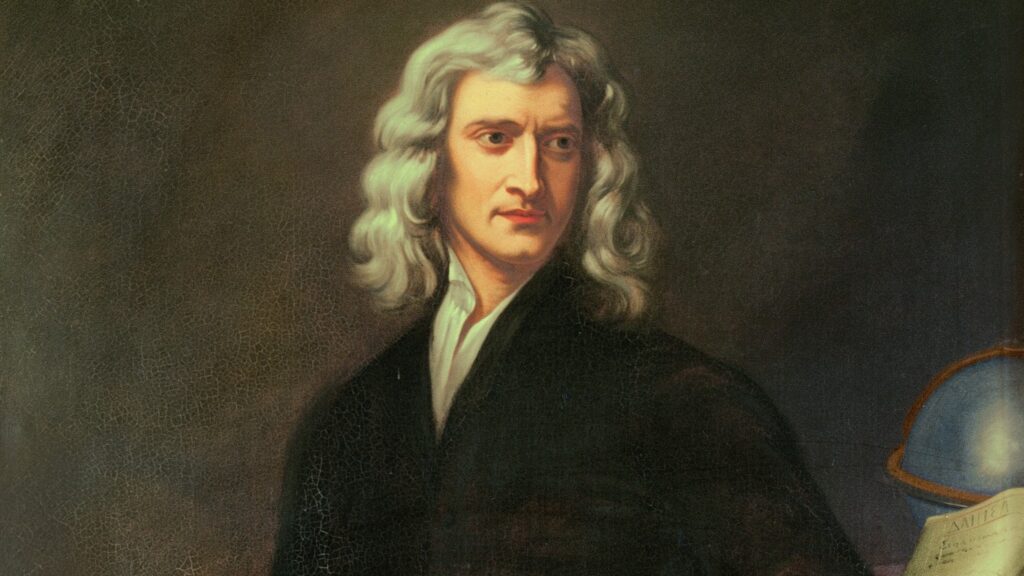
ADVERTISEMENT - CONTINUE READING BELOW
Newton lived alone for years while developing calculus and the laws of gravity. He often lectured to empty classrooms when no students showed up. His colleagues noted his avoidance of eye contact and rare speech. Newton followed strict daily routines and threw tantrums when interrupted. These behaviors, combined with his singular focus on science, lead many modern experts to speculate about possible autism.
Thomas Jefferson: Presidential Introvert
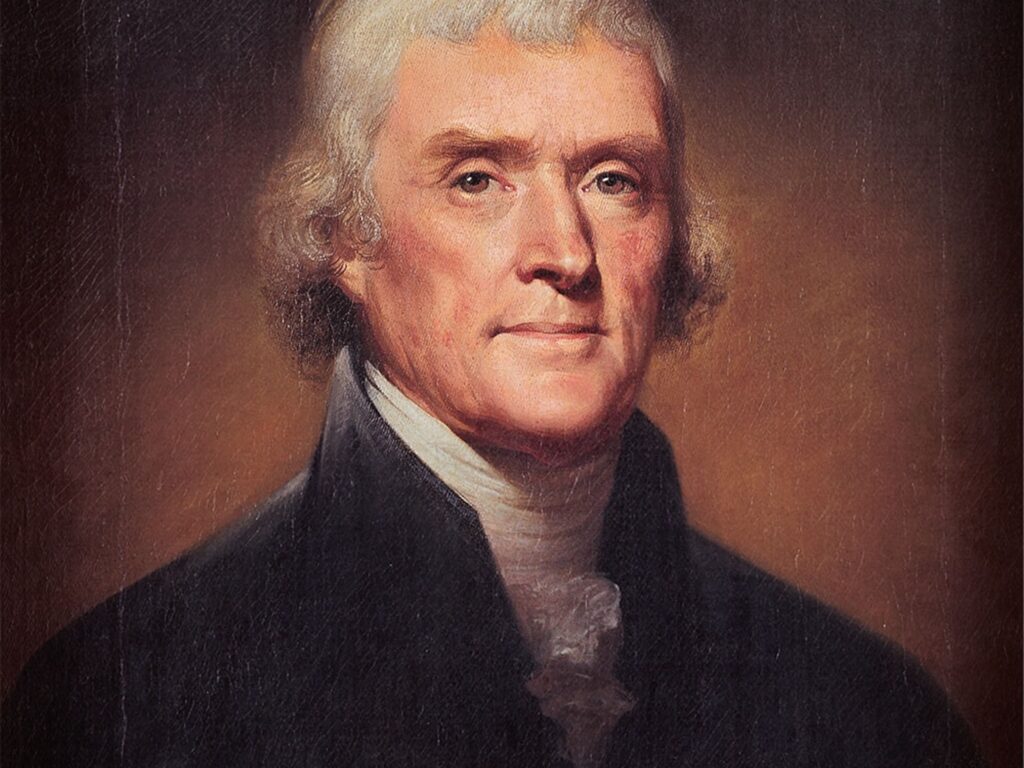
ADVERTISEMENT - CONTINUE READING BELOW
Jefferson, who drafted the Declaration of Independence, paradoxically dreaded public speaking so much he often delegated it to others. He meticulously recorded everything from weather patterns to financial transactions. Noise bothered him intensely, causing him to avoid loud gatherings. His decades-long obsession with redesigning Monticello suggests the focused interests common in autism. Some attribute these traits to grief after losing his wife.
Nikola Tesla: Electrical Visionary
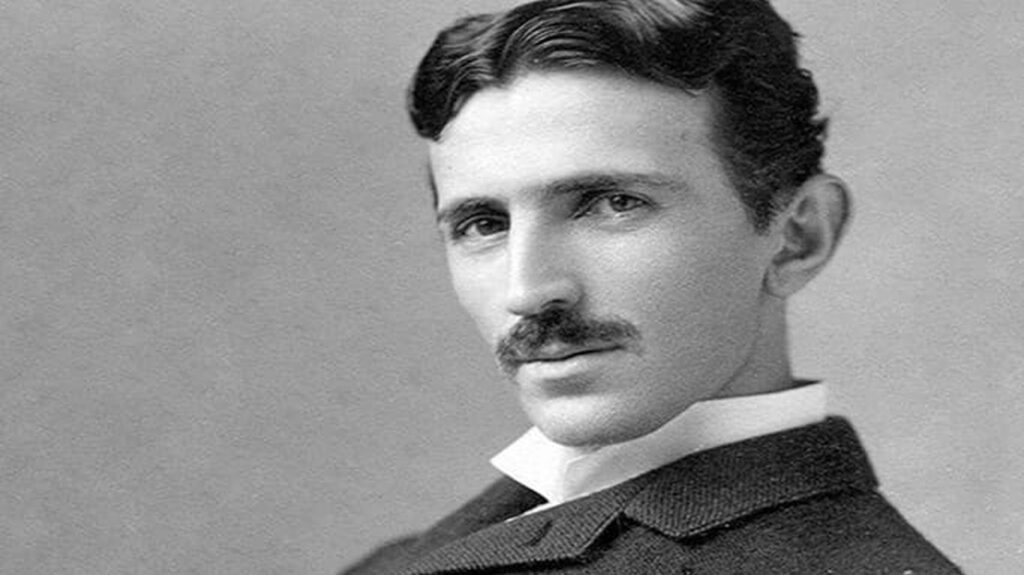
ADVERTISEMENT - CONTINUE READING BELOW
Tesla counted his steps obsessively and insisted on using exactly 18 napkins daily. He visualized his electrical inventions completely in his mind without sketches. Physical contact repulsed him, as did certain sounds and bright lights. Living alone in hotels, Tesla maintained rigid routines. His revolutionary work with alternating current electricity changed modern life, but his social oddities made him increasingly isolated.
Michelangelo: Perfectionist Sculptor
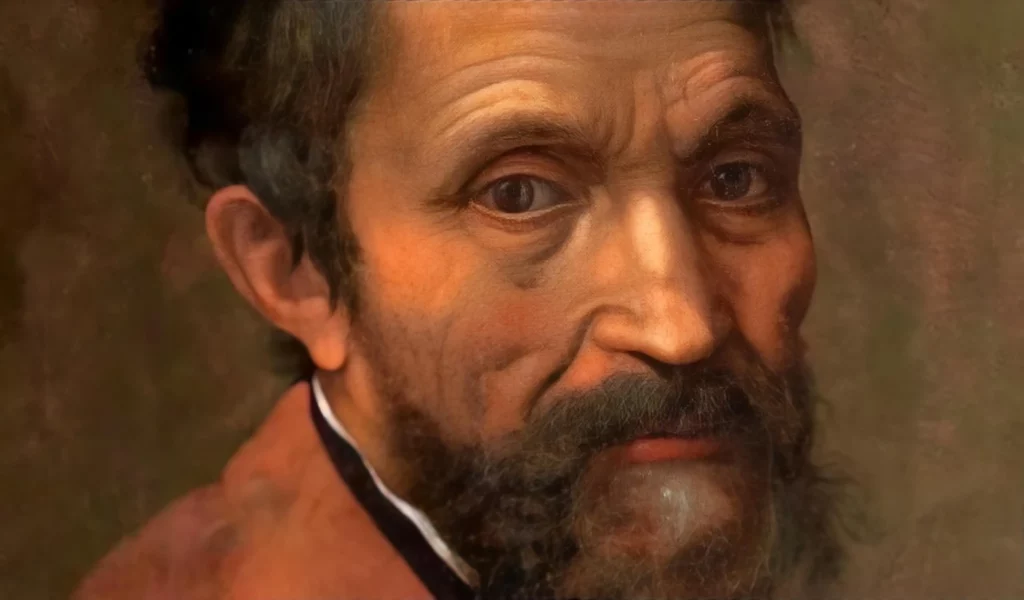
ADVERTISEMENT - CONTINUE READING BELOW
Michelangelo slept in his clothes and worked alone for exceptionally long stretches. His letters reveal an obsession with perfection that drove patrons crazy. He clashed with others due to his poor social skills and showed minimal interest in forming friendships. The creator of David and the Sistine Chapel ceiling preferred solitude to celebration. His single-minded dedication to art suggests autism to some experts.
Lewis Carroll: Mathematical Storyteller
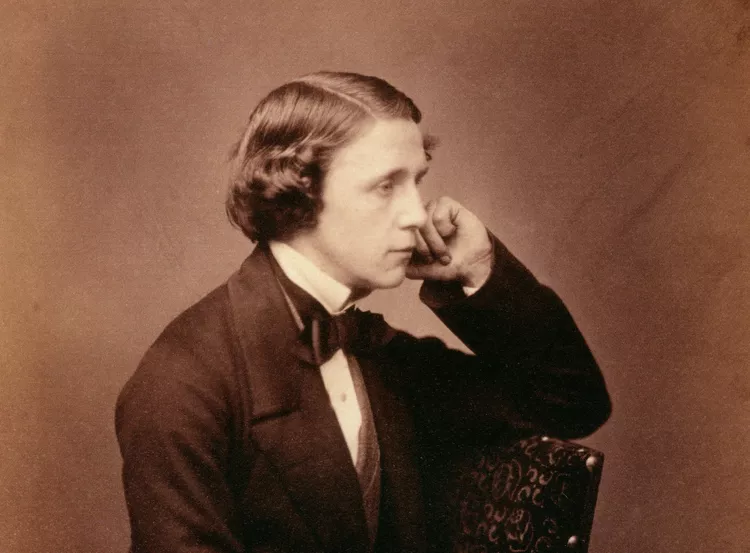
ADVERTISEMENT - CONTINUE READING BELOW
Carroll stammered significantly and avoided adult company while forming strong bonds with children through his imaginative stories. The author of “Alice’s Adventures in Wonderland” taught mathematics and followed extremely rigid schedules. His real name was Charles Dodgson. He escaped into worlds of whimsical logic, finding comfort in precisely structured nonsense. His documented social patterns point toward possible autism.
Charles Darwin: Meticulous Observer
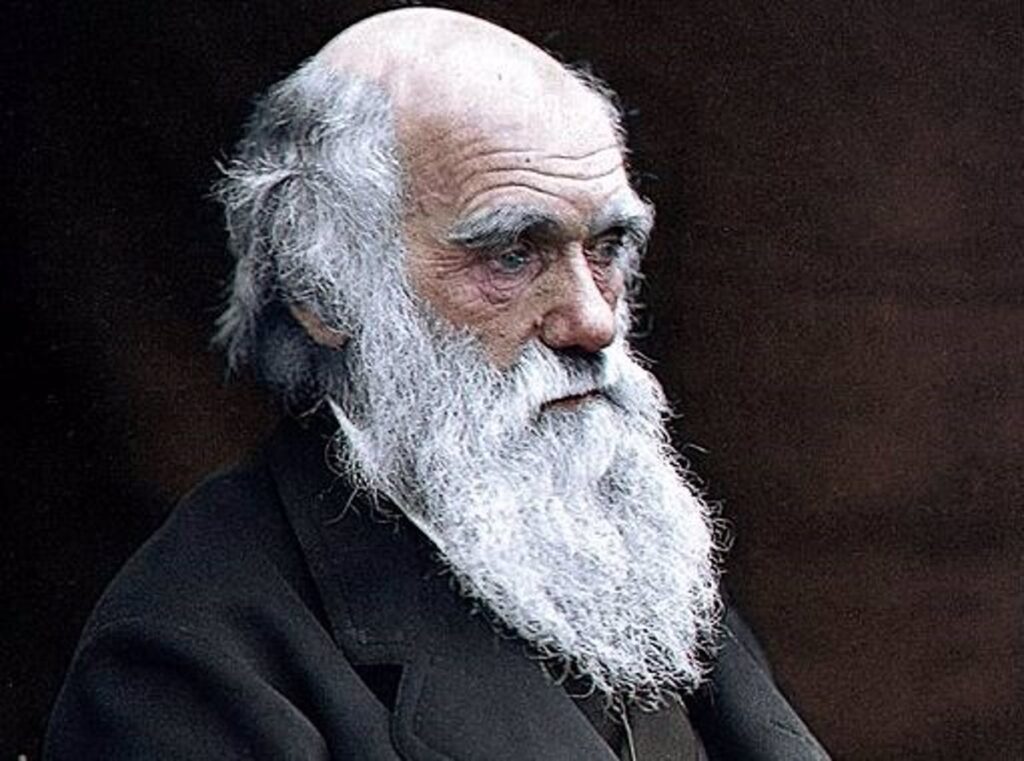
ADVERTISEMENT - CONTINUE READING BELOW
Darwin avoided parties and social events whenever possible. Instead of conversation, he wrote thousands of letters. His son noted Darwin’s habit of walking exactly the same path daily. The evolutionary theorist cataloged species with relentless precision during and after his voyage on the Beagle. This combination of social avoidance and intense focus makes some researchers suspect autism.
Ludwig van Beethoven: Untamed Musical Mind
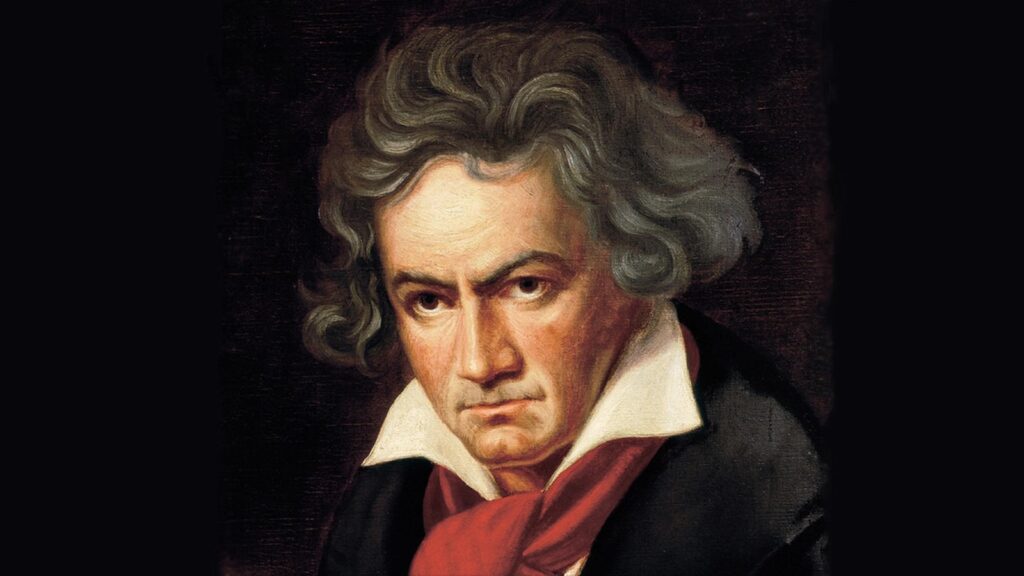
ADVERTISEMENT - CONTINUE READING BELOW
Beethoven composed symphonies despite progressive deafness. He lived in messy isolation and hummed loudly in public, oblivious to social norms. His sensitivity to sound predated his hearing loss. He demanded exact performances of his work, often alienating musicians. Social niceties meant nothing to him compared to musical perfection. This intense focus, combined with sensory sensitivity, suggests autism to some researchers.
Emily Dickinson: Reclusive Poet
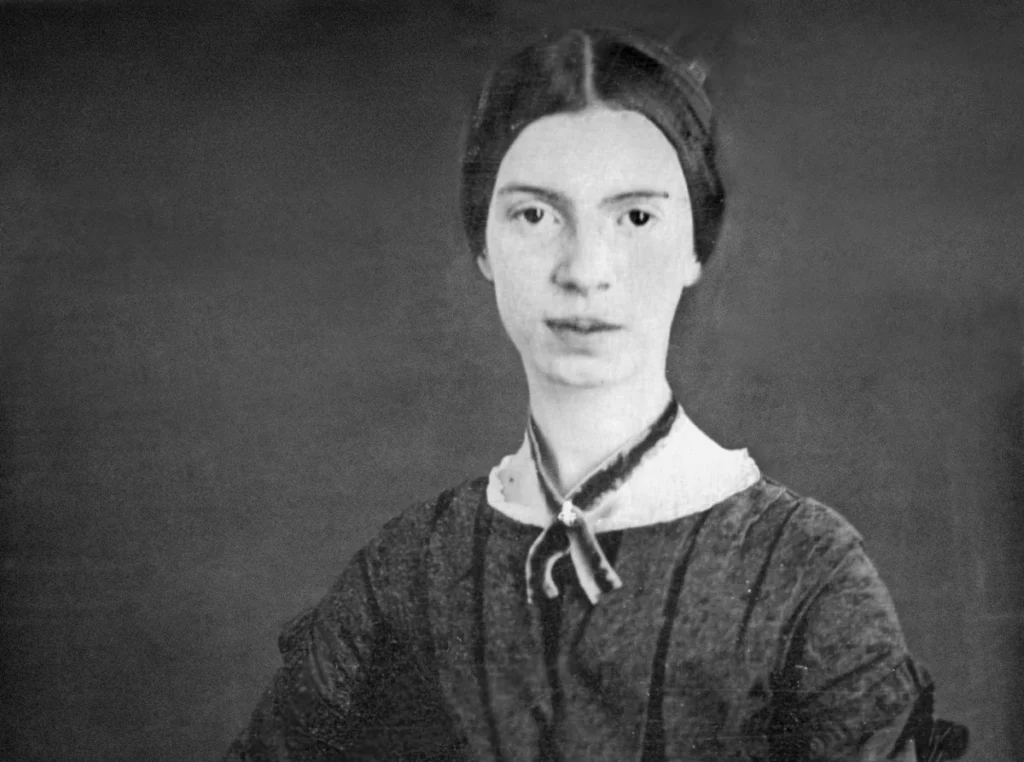
ADVERTISEMENT - CONTINUE READING BELOW
Dickinson rarely left her family home in Amherst yet wrote nearly 1,800 poems. She wore white clothes exclusively and spoke to visitors through doors rather than face-to-face. Children delighted her more than adults because of their straightforward nature. Her introspective genius and retreat from society align with autism traits, though others point to possible agoraphobia or depression as explanations.
Wolfgang Amadeus Mozart: Musical Prodigy

ADVERTISEMENT - CONTINUE READING BELOW
Mozart feared loud trumpet sounds despite his musical genius. As a child, he learned music instantly, performing complex pieces after a single hearing. Later in life, he acted strangely, sometimes leaping over furniture or meowing like a cat. His letters show repetitive wordplay and unusual humor. The composer created over 600 works before dying at 35, his brilliance possibly linked to autism.
Andy Warhol: Pop Art Pioneer
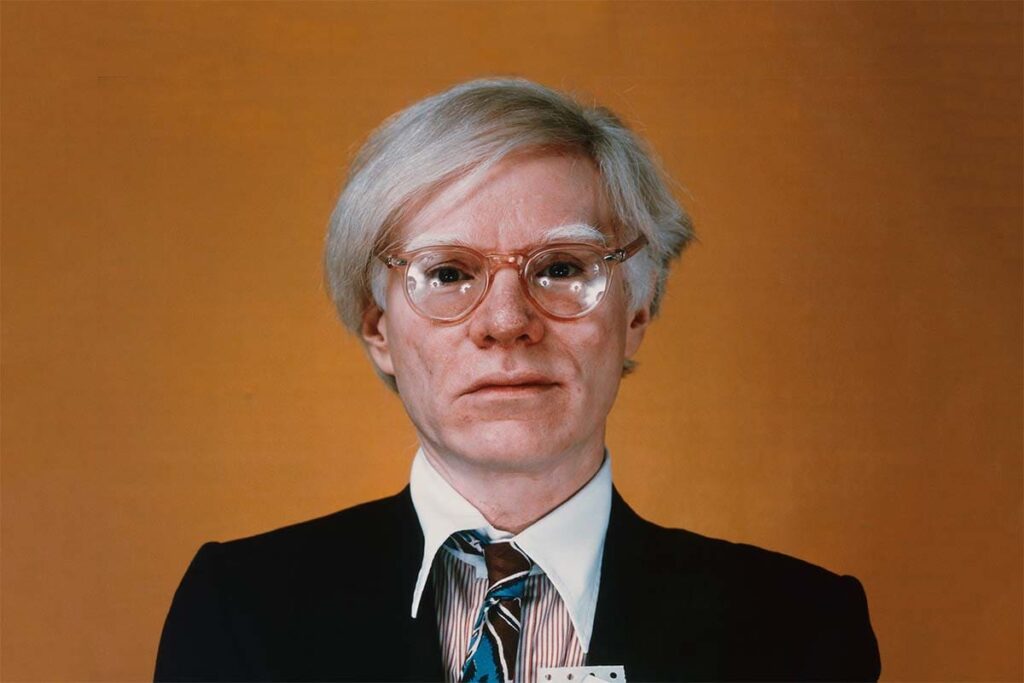
ADVERTISEMENT - CONTINUE READING BELOW
Warhol rarely spoke more than “yes” or “no” in conversations. He ate the same lunch daily and obsessively filmed mundane repetition. His Campbell’s Soup Cans and celebrity portraits transformed art through mechanical reproduction and deliberate flatness. Some autism experts see his social detachment and focus on repetition as classic Asperger’s traits. Others view these characteristics as part of his carefully constructed artistic persona.
Jane Austen: Observant Novelist

ADVERTISEMENT - CONTINUE READING BELOW
Austen wrote “Pride and Prejudice” while living in rural seclusion. She avoided crowds completely and once fainted when surprised by sudden movements. Despite her precise observations of human behavior in her novels, she struggled with actual socializing. Her sharp wit challenges rigid autism stereotypes, yet her sensitivity and patterns of withdrawal fit the profile many researchers recognize.
Henry Cavendish: Whisper-Voiced Scientist
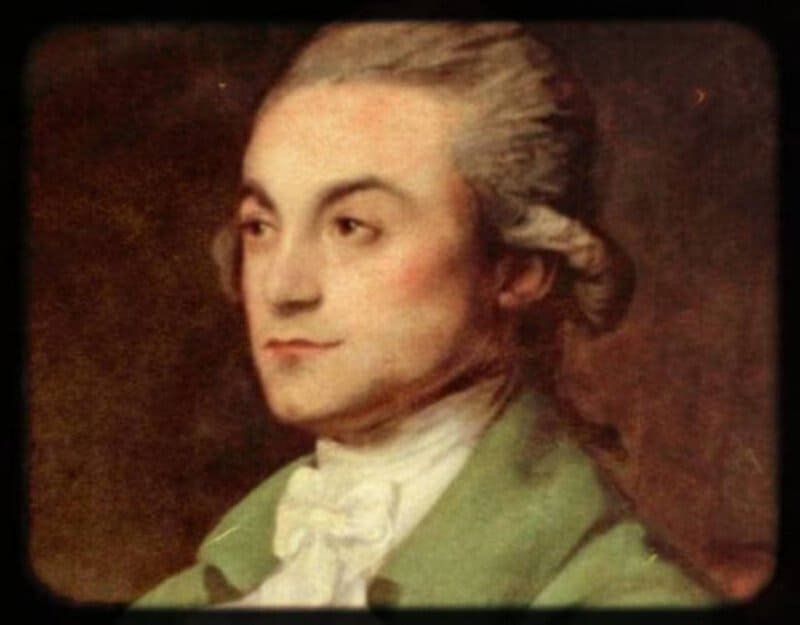
ADVERTISEMENT - CONTINUE READING BELOW
Cavendish discovered hydrogen and measured Earth’s density with remarkable precision. He hid from guests in his own home and spoke so quietly people strained to hear him. He communicated with servants through written notes to avoid face-to-face interaction. His laboratory work showed obsessive exactness. This combination of social avoidance and precision suggests autism to many scientific historians.
Gregor Mendel: Genetics Founder
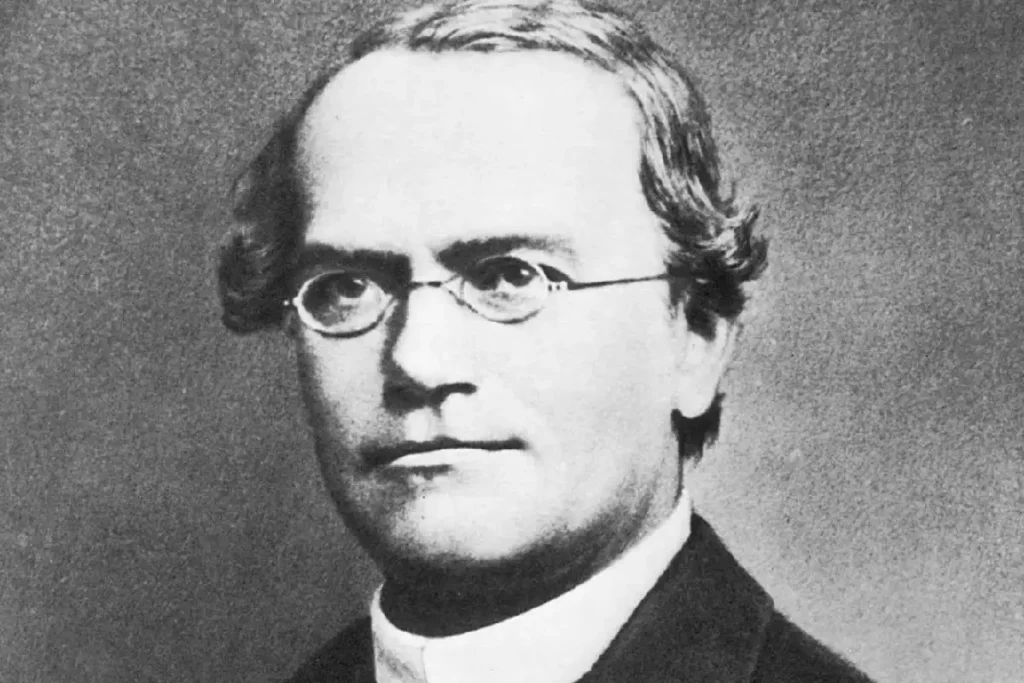
ADVERTISEMENT - CONTINUE READING BELOW
Mendel spent years crossbreeding pea plants with monk-like focus in his monastery garden. His meticulous experiments established the foundations of genetics. Quiet and solitary by nature, he rarely shared his groundbreaking findings in public forums. His methodical approach reflected either monastic discipline or possibly autism. The patterns he discovered in heredity changed biology forever despite his social reticence.
Herman Melville: Nautical Novelist
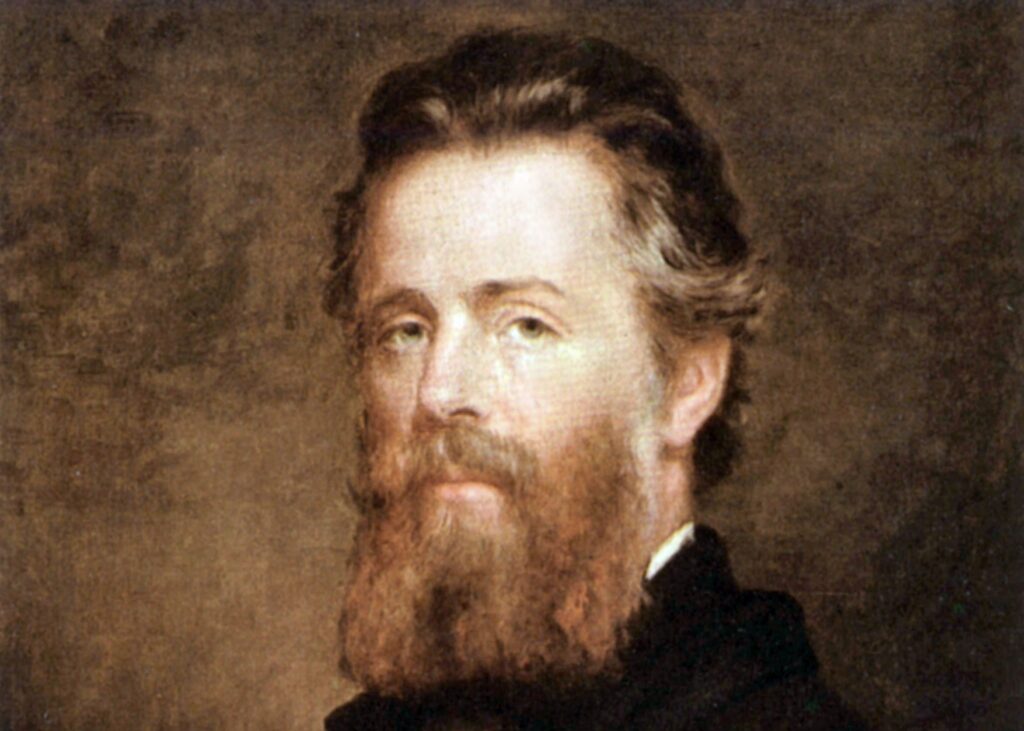
ADVERTISEMENT - CONTINUE READING BELOW
Melville sailed as a young man before withdrawing into writing “Moby-Dick.” His fixation on whaling details filled hundreds of pages with technical information that most readers skip. Fame eluded him during his lifetime, partly because he shunned literary society. He grew increasingly moody when critics failed to understand his work. This obsessiveness and social withdrawal hint at possible autism.
James Joyce: Literary Experimenter
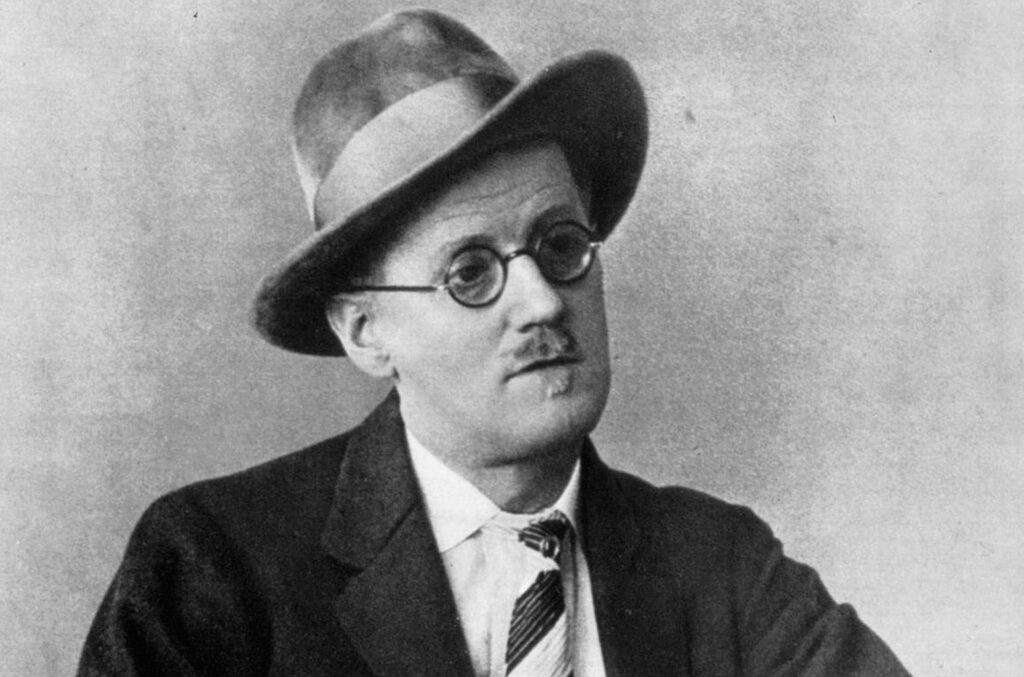
ADVERTISEMENT - CONTINUE READING BELOW
Joyce feared thunderstorms intensely and wore oddly specific outfits while writing. His dense, patterned prose in “Ulysses” shows remarkable attention to linguistic detail. Though he drank heavily in Paris cafés, he remained socially aloof from other writers. His experiments with language created new literary forms. These patterns of fear, routine, and focus suggest autism to some literary scholars.
Glenn Gould: Reclusive Pianist
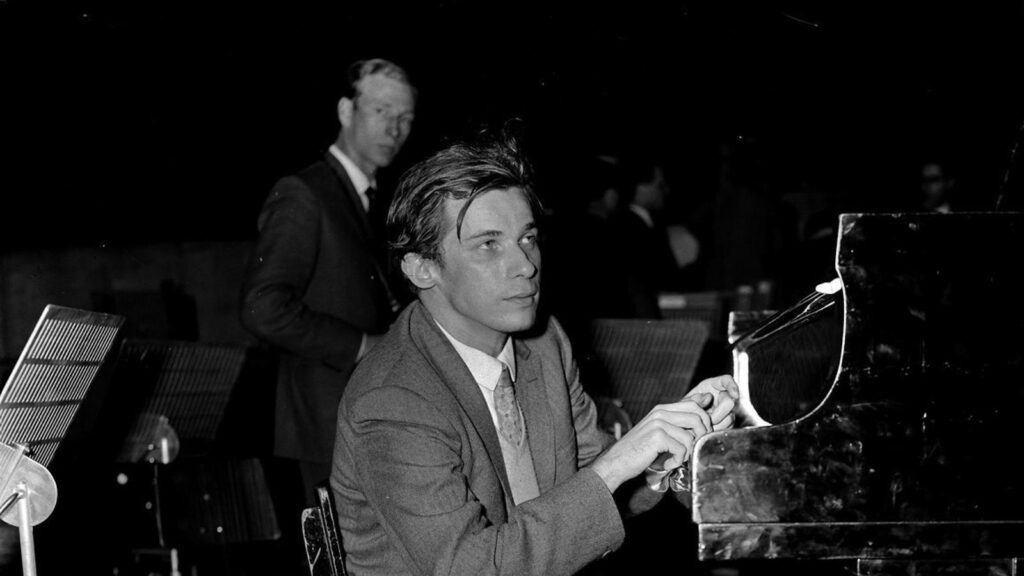
ADVERTISEMENT - CONTINUE READING BELOW
Gould hated cold temperatures so much that he wore gloves indoors. He hummed constantly while playing Bach, frustrating recording producers. The Canadian pianist abandoned live performances entirely, preferring the controlled environment of recording studios. His interpretations of Bach changed how we hear classical music. His sensitivity to temperature, sound, and social pressure aligns with autism traits.
Alan Turing: Computing Pioneer
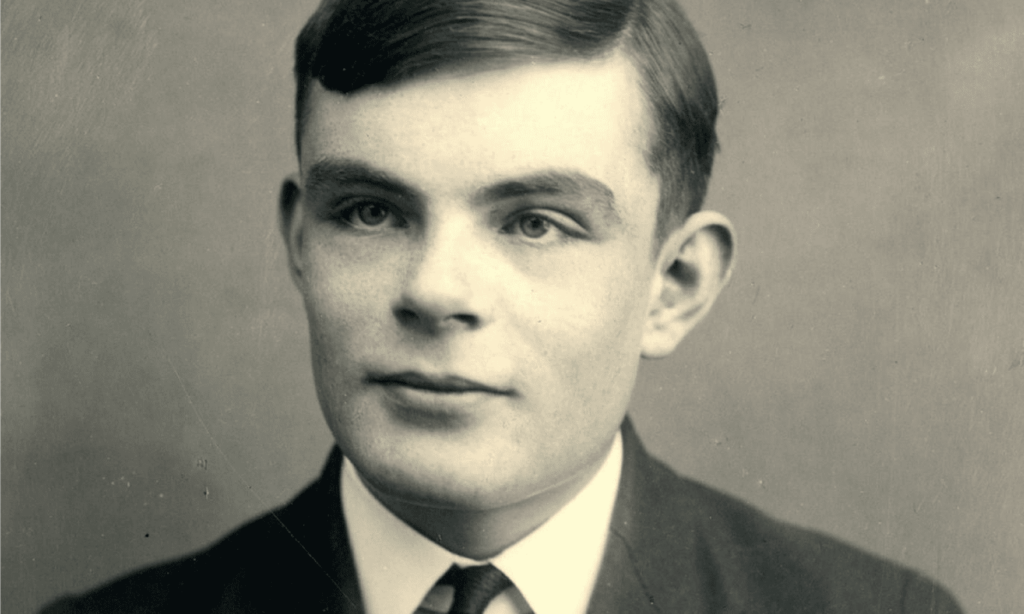
ADVERTISEMENT - CONTINUE READING BELOW
Turing biked alone for miles between work locations during World War II. He struggled with casual conversation but excelled at cracking Nazi codes. His work with early computers laid the foundations for artificial intelligence. Colleagues noted his fixation on logic puzzles and difficulty understanding social norms. Modern autism experts frequently cite Turing as a likely example of Asperger’s syndrome in history.
Virginia Woolf: Stream-of-Consciousness Author

ADVERTISEMENT - CONTINUE READING BELOW
Woolf’s diaries reveal how noise overwhelmed her completely. She pioneered stream-of-consciousness writing in novels like “Mrs. Dalloway.” Her frequent withdrawals from social life allowed her unique literary voice to develop. Some researchers propose autism alongside her documented bipolar disorder. Her sensitivity to sensory input and rich inner life match patterns seen in many autistic women.
Paul Dirac: Silent Physicist
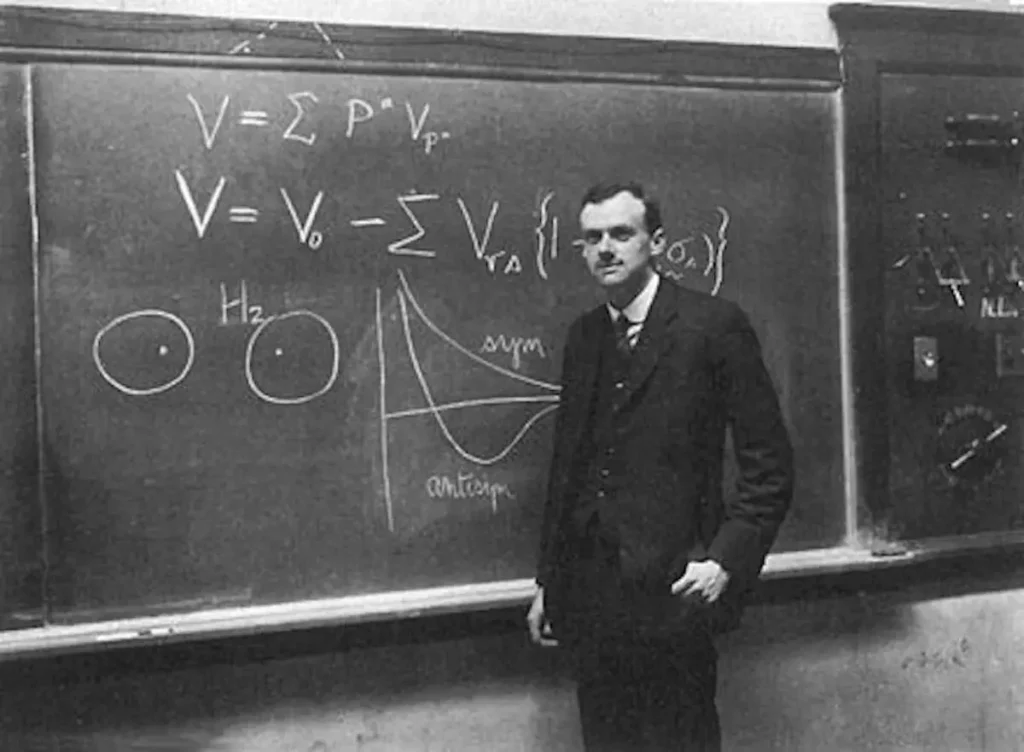
ADVERTISEMENT - CONTINUE READING BELOW
Dirac spoke so rarely that colleagues timed his silences—once he paused mid-lecture for 30 seconds. He took words completely literally, missing jokes and figurative language. The co-founder of quantum mechanics lived almost entirely through equations. Einstein called him “the strangest man.” His minimal speech and literal interpretation suggest autism to many who study his life and work.
George Orwell: Precise Political Writer

ADVERTISEMENT - CONTINUE READING BELOW
Orwell lived simply and distrusted crowds throughout his life. His son remembered his father’s preference for solitude and routine. The author of “1984” wrote with stark precision about political dangers. His ability to see societal patterns while remaining somewhat removed from social connections fits autism profiles. Some see his focused writing style as evidence of autism.
Hans Christian Andersen: Fairy Tale Creator
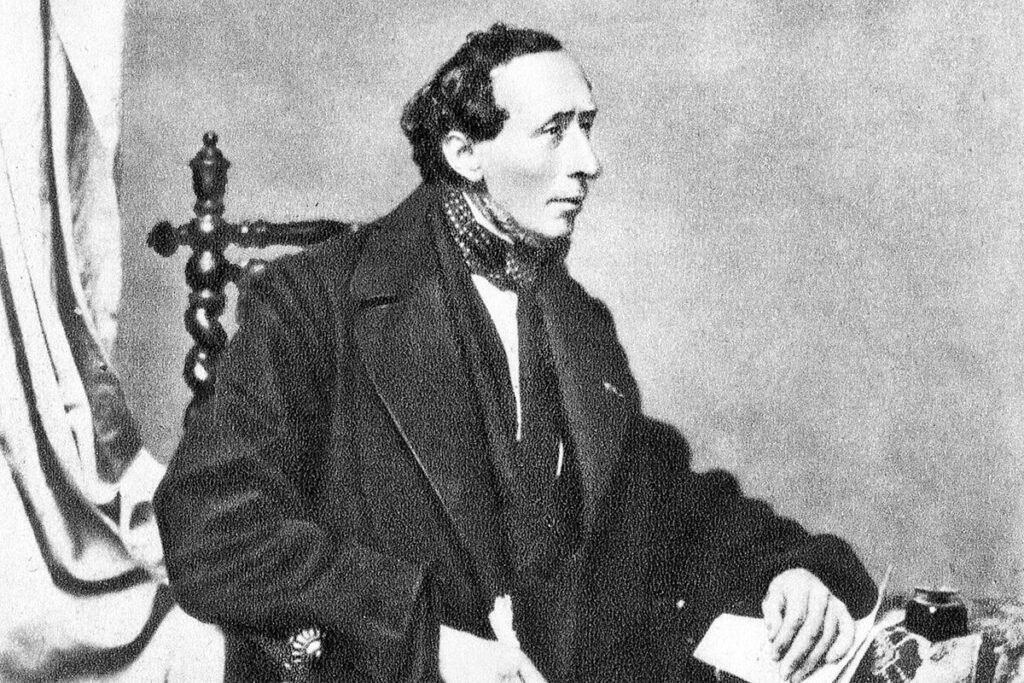
ADVERTISEMENT - CONTINUE READING BELOW
Andersen stood unusually tall and moved awkwardly, facing mockery throughout childhood. He fixated on storytelling to escape reality. His fairy tales like “The Little Mermaid” reveal outsider perspectives. He traveled constantly but always alone. Sensitivity to criticism devastated him regularly. Physical fears plagued him daily. These traits align with autism according to several researchers.
Claude Monet: Obsessive Painter
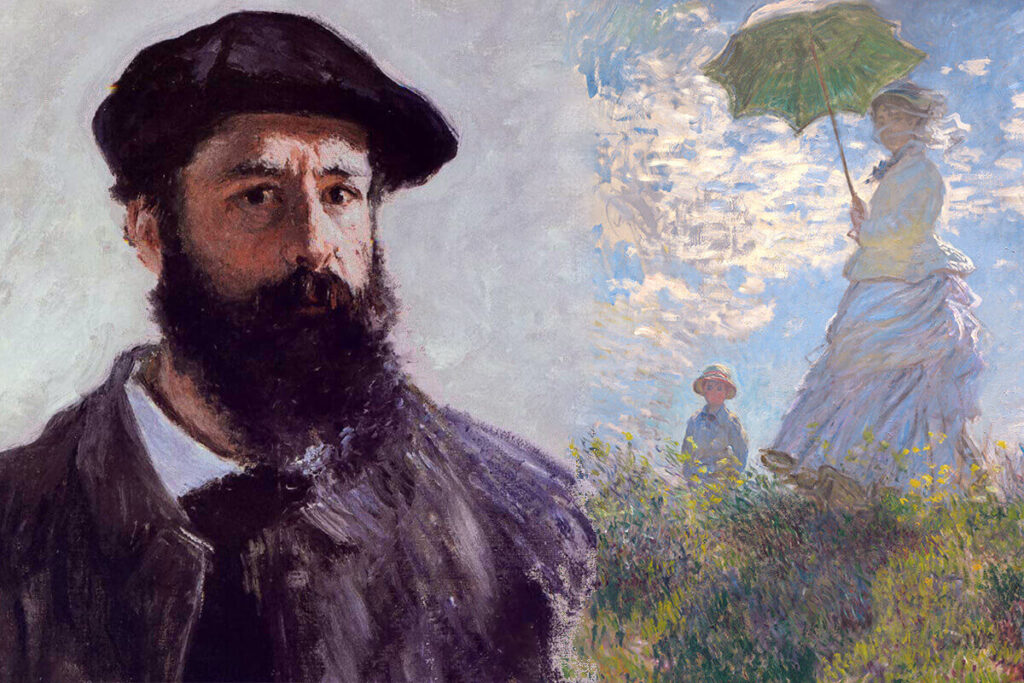
ADVERTISEMENT - CONTINUE READING BELOW
Monet painted the same water lilies hundreds of times in different lights. He hated being interrupted while working and maintained a highly private life. The founder of Impressionism showed extraordinary sensitivity to subtle light changes others missed completely. His repeated focus on identical subjects from slightly different perspectives suggests autism to some art historians studying his methods.
Srinivasa Ramanujan: Mathematical Intuition

ADVERTISEMENT - CONTINUE READING BELOW
Ramanujan intuited complex mathematical formulas without formal proofs. He viewed numbers through spiritual lenses, claiming a goddess revealed equations in dreams. His vegetarian diet followed strict ritual patterns. The Indian mathematician ignored social norms completely while pursuing pure mathematics. His exceptional abilities combined with social detachment point toward possible autism according to modern researchers.
Ada Lovelace: Computing Visionary
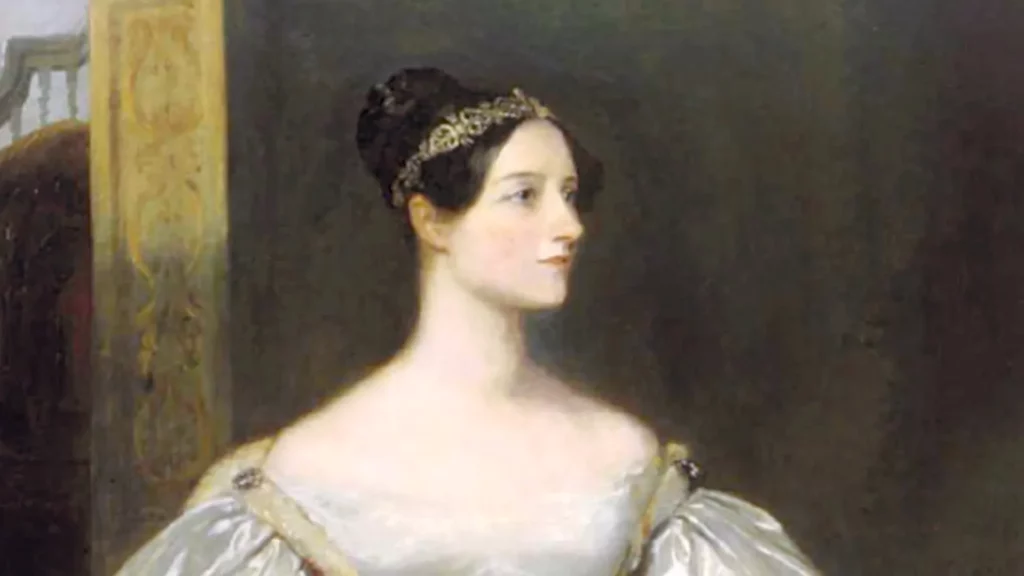
ADVERTISEMENT - CONTINUE READING BELOW
Lovelace foresaw computers’ potential well beyond calculation. Raised under strict mathematical education, she wrote poetically about abstract operations. Her notes on Charles Babbage’s Analytical Engine essentially created the first computer program. She defied female expectations of her era completely. Her intense focus on mathematics combined with social uniqueness suggests autism to some historians.
Leonardo da Vinci: Universal Genius
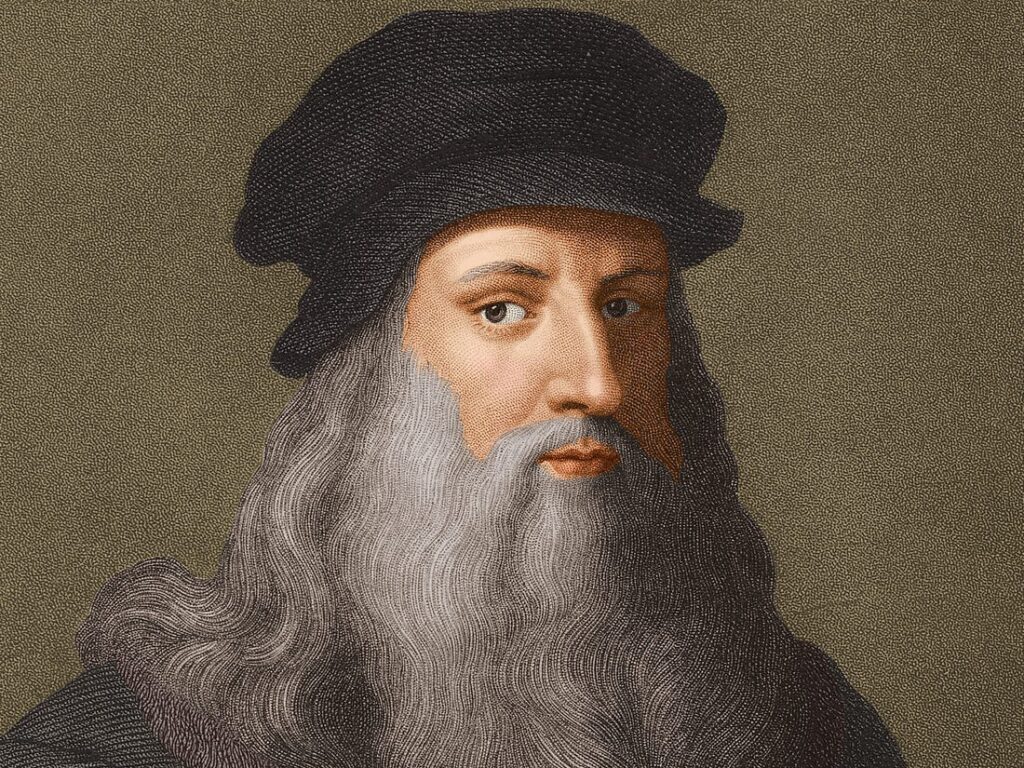
ADVERTISEMENT - CONTINUE READING BELOW
Leonardo left countless projects unfinished while sketching obsessively in notebooks. He painted the Mona Lisa and designed flying machines centuries ahead of their time. Though charming with patrons, he lived apart from his peers. His notebooks reveal extreme attention to minute details in anatomy and mechanics. This combination of social separation and hyperfocus suggests autism to some researchers.
Johannes Kepler: Planetary Mathematician
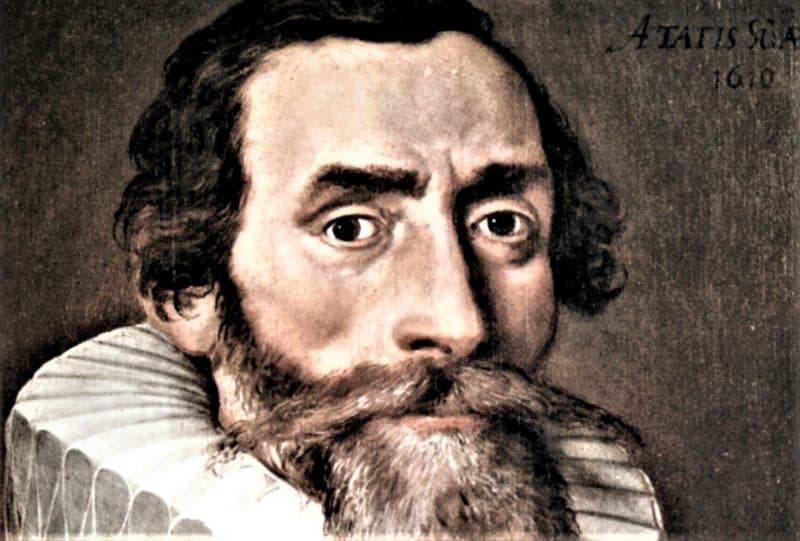
ADVERTISEMENT - CONTINUE READING BELOW
Kepler suffered poor eyesight yet calculated planetary motions with astonishing accuracy. He avoided company whenever possible, preferring mathematical work. His quirky letters reveal unusual thought patterns beneath his astronomical discoveries. The mathematician who established that planets move in ellipses showed classic signs of autism according to several modern analyses of his documented behaviors.
Immanuel Kant: Routine Philosopher
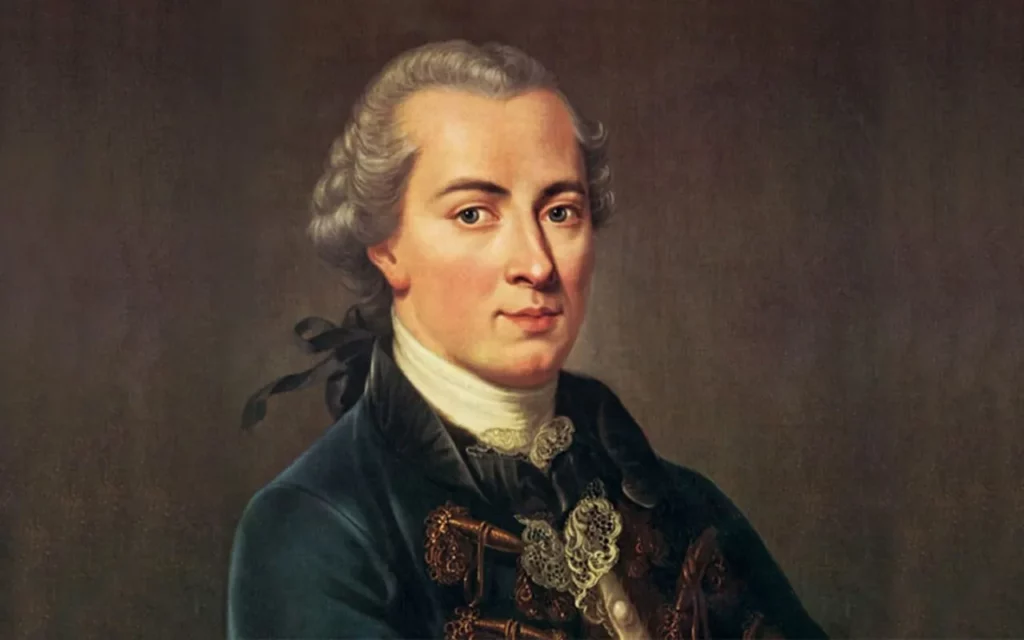
ADVERTISEMENT - CONTINUE READING BELOW
Kant never left his hometown of Königsberg during his adult life. He walked precisely the same route daily, so reliably that neighbors set their clocks by his passing. The philosopher wrote “Critique of Pure Reason” while avoiding small talk completely. His need for absolute routine and discomfort with casual social interaction align perfectly with autism traits recognized by modern psychologists.
Franz Kafka: Isolated Storyteller
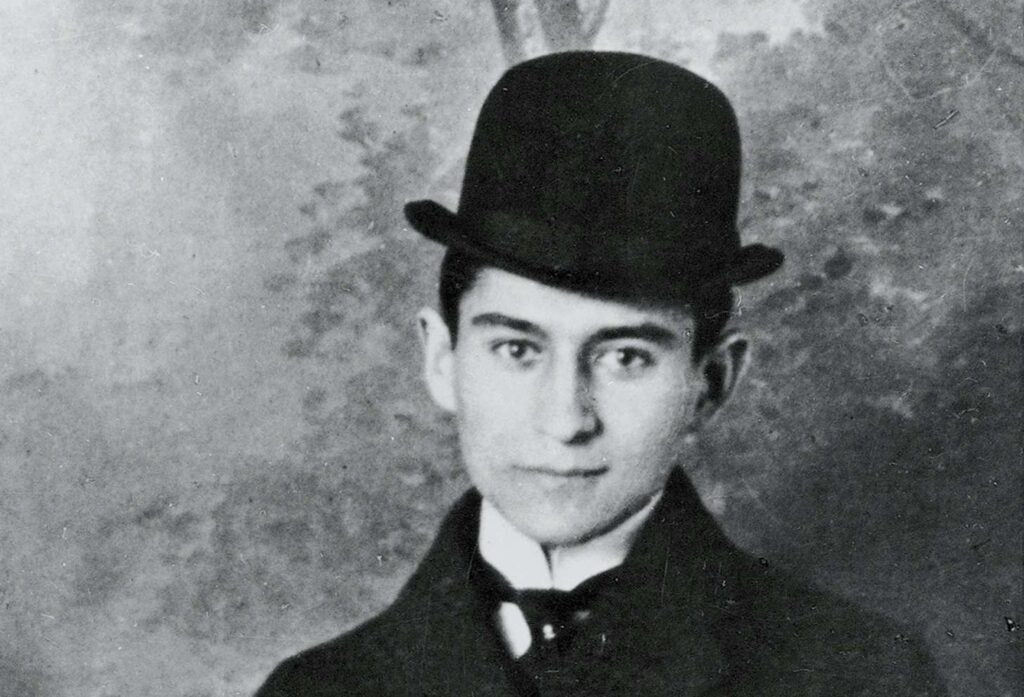
ADVERTISEMENT - CONTINUE READING BELOW
Kafka feared authority figures intensely and lived alone most of his adult life. His stories like “The Metamorphosis” explore alienation through nightmarishly detailed prose. Working as an insurance clerk by day, he wrote disturbing fiction by night. His extreme isolation from others while maintaining precise bureaucratic work suggests possible autism, according to literary researchers studying his life patterns.
T.S. Eliot: Formally Precise Poet
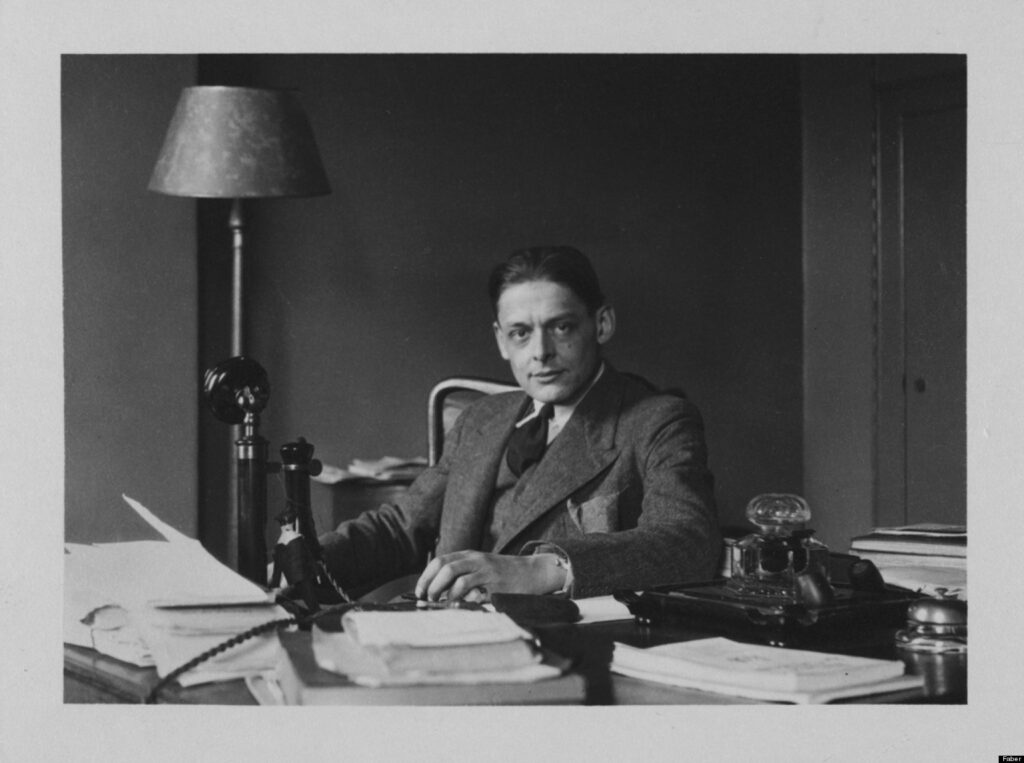
ADVERTISEMENT - CONTINUE READING BELOW
Eliot maintained extreme formality in social situations, appearing stiff to contemporaries. His poetry in “The Waste Land” reused motifs obsessively. Born American, he became deliberately British in manner and speech. Literary scholars note his reserved nature and need for precise order in both writing and personal habits. These traits align with autism in the view of some researchers.
Erik Satie: Eccentric Composer
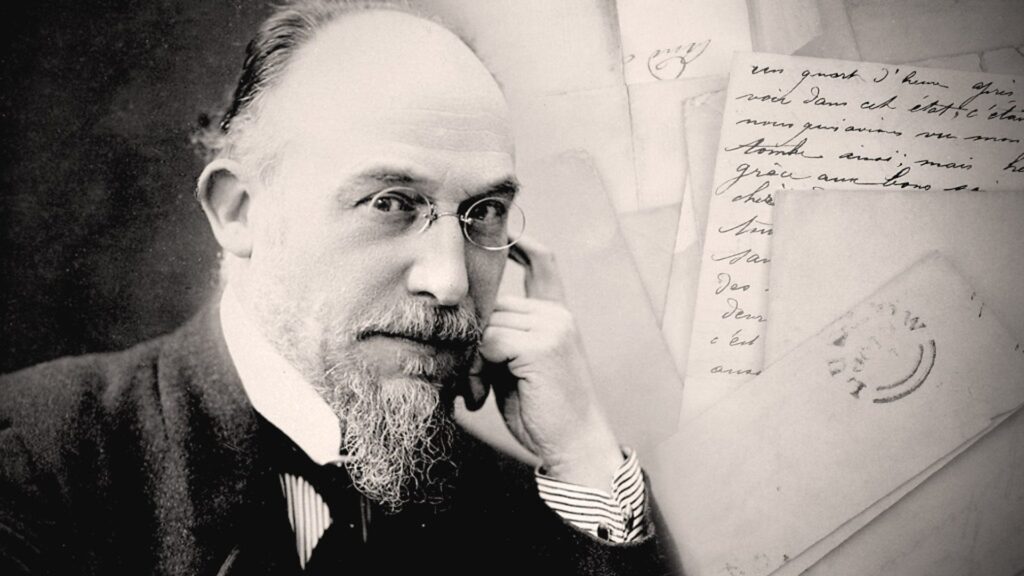
ADVERTISEMENT - CONTINUE READING BELOW
Satie ate only white foods and walked miles daily following exact routes. He hoarded umbrellas in his apartment and composed minimalist music like “Gymnopédies” that repeats simple patterns. The French musician lived extremely oddly even by artistic standards. His sensory fixations with food and collecting, combined with musical repetition, strongly suggest autism to modern researchers studying historical figures.
Barbara McClintock: Corn Geneticist
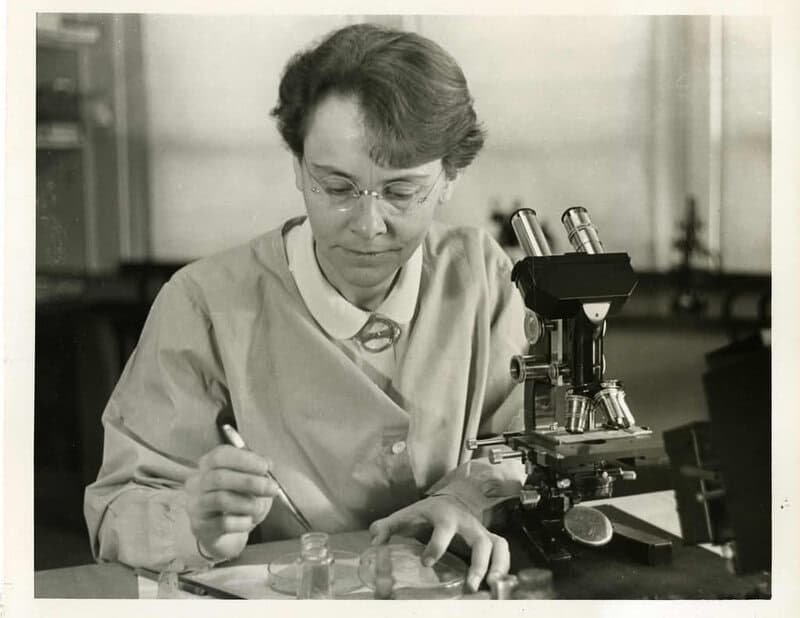
ADVERTISEMENT - CONTINUE READING BELOW
McClintock worked completely alone, declining laboratory assistants throughout her career. She claimed she could “feel” patterns in corn genetics that others couldn’t see. The Nobel Prize winner shunned fame despite her revolutionary discovery of genetic transposition. Her deep focus and sensory connection to her research subjects reflect traits often seen in autism, according to scientific biographers.
John Nash: A Beautiful Mind
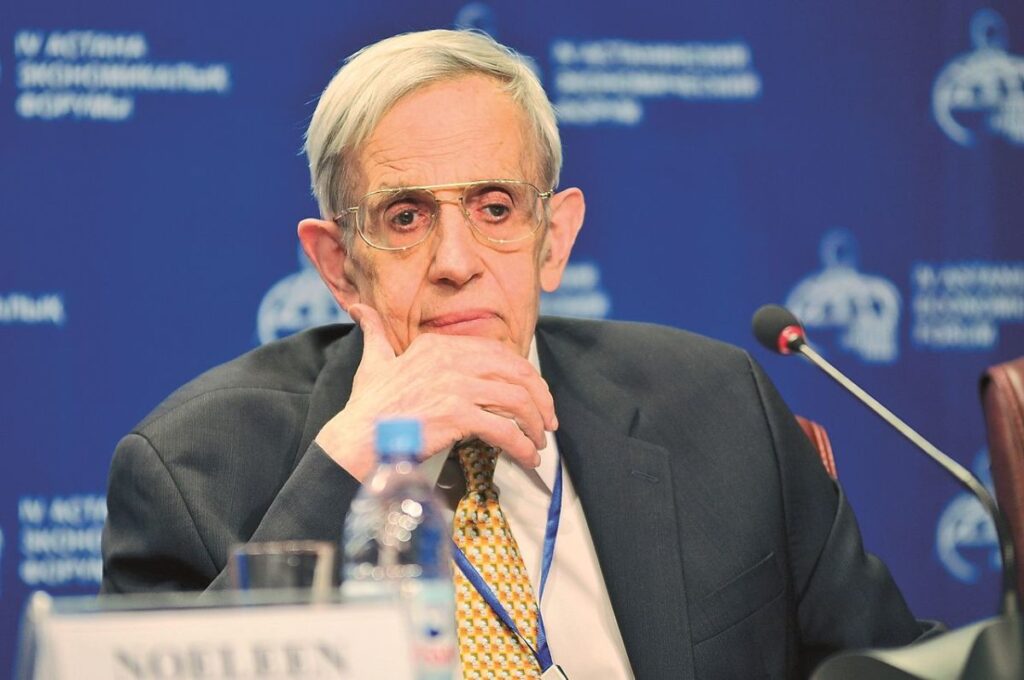
ADVERTISEMENT - CONTINUE READING BELOW
Nash experienced schizophrenia, but his social oddities predated his psychosis. The mathematician obsessed over patterns and game theory concepts throughout his life. His work on equilibrium earned a Nobel Prize decades after his illness began. Beyond his diagnosed condition, his fundamental social awkwardness and mathematical hyperfocus suggest possible autism according to researchers who study neurodivergence.
H.P. Lovecraft: Cosmic Horror Creator
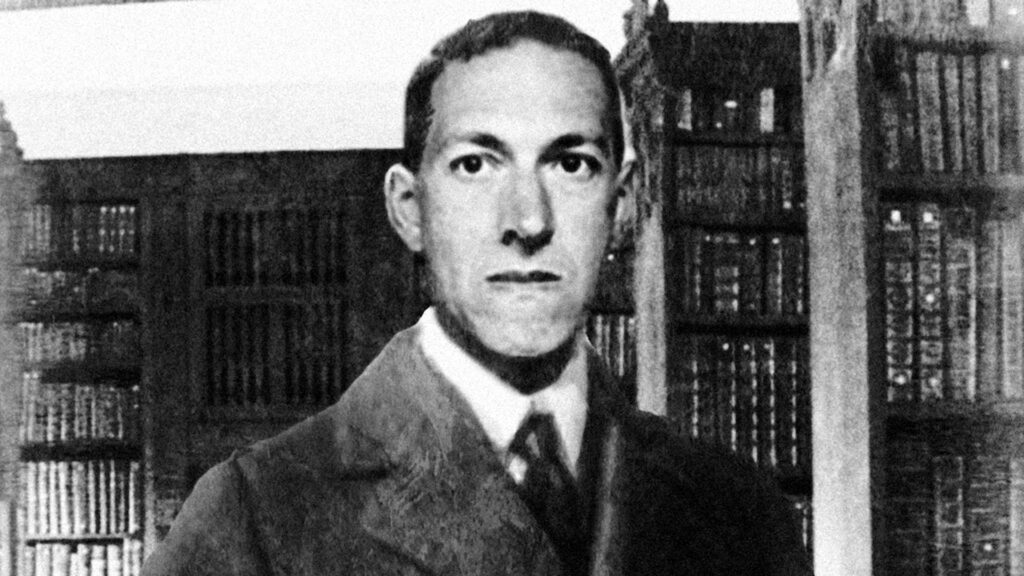
ADVERTISEMENT - CONTINUE READING BELOW
Lovecraft feared foreigners and seafood smells with equal intensity. His stories repeat cosmic dread themes obsessively. He maintained childhood fears into adulthood and struggled to support himself through writing. The creator of Cthulhu lived largely through correspondence rather than face-to-face friendships. His sensory sensitivities and social difficulties point toward autism in many scholarly analyses.
William Blake: Visionary Artist
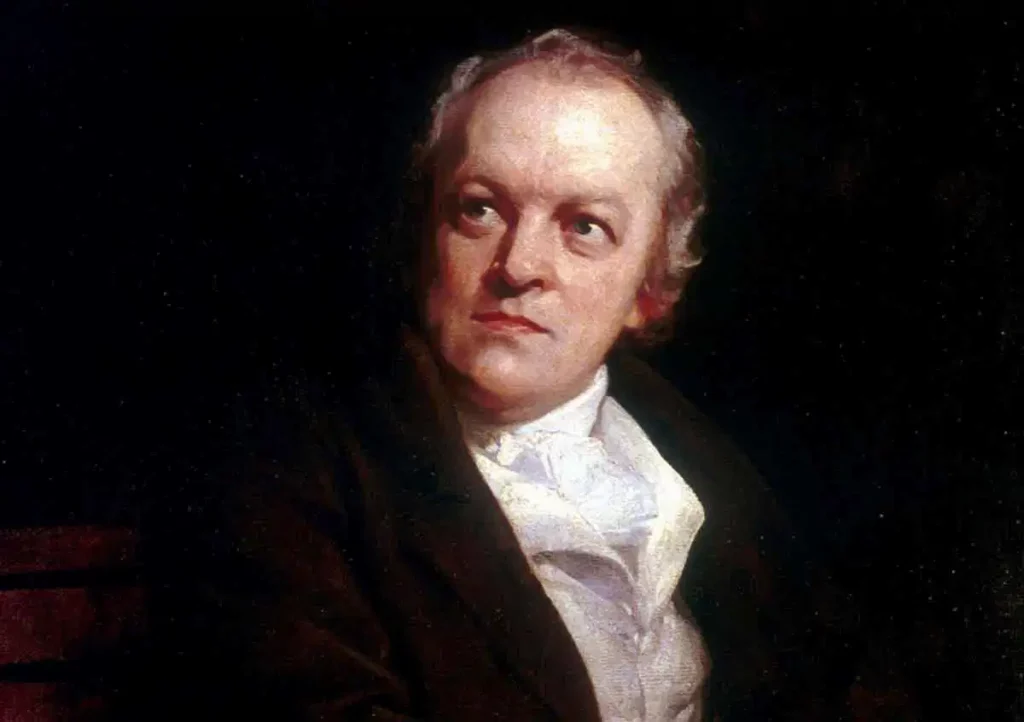
ADVERTISEMENT - CONTINUE READING BELOW
Blake saw angels in trees and conversed with spiritual beings others couldn’t perceive. He lived simply while creating complex illustrated poems. Society largely rejected his visionary work during his lifetime. His sensory intensity and difficulty connecting with contemporary audiences suggest possible autism. Art historians note his unique perception of reality aligns with neurodivergent processing patterns.
Marie Curie: Focused Scientist

ADVERTISEMENT - CONTINUE READING BELOW
Curie ignored fashion entirely and worked relentlessly on radioactive elements. She won Nobel Prizes in both Physics and Chemistry for her discoveries. As her fame grew, she withdrew socially rather than embracing public attention. The Polish-French scientist focused solely on research despite personal hardships. This combination of social withdrawal and hyperfocus suggests autism to some researchers.
Carl Jung: Symbolic Thinker
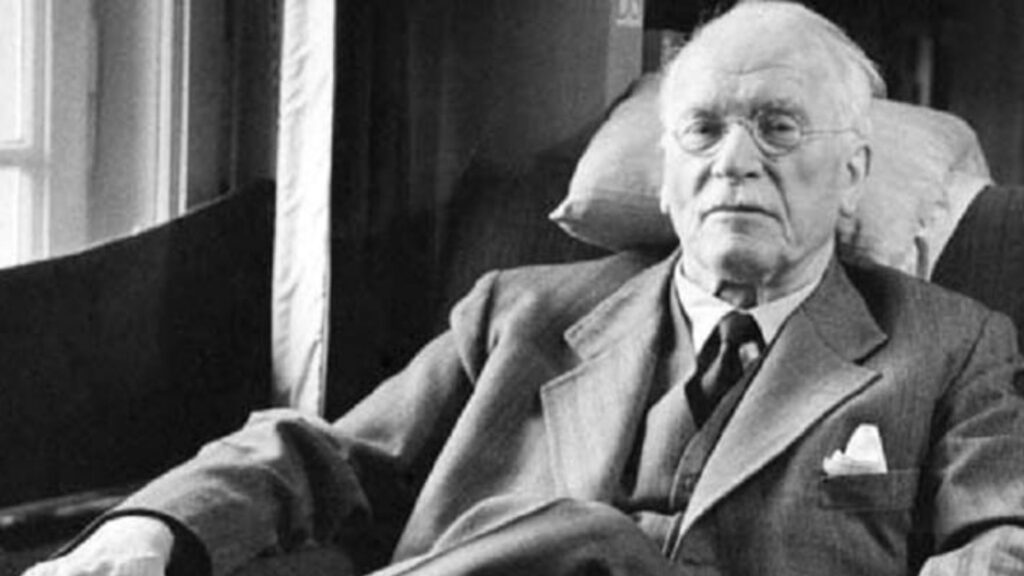
ADVERTISEMENT - CONTINUE READING BELOW
Jung became obsessed with dreams and built a stone tower retreat away from others. The Swiss psychologist explored the unconscious through detailed symbolic systems. Though he analyzed human connection professionally, he spoke little in personal contexts. His intense focus on internal symbol patterns rather than external social connections fits profiles that autism researchers recognize in historical figures.
Edvard Munch: Emotional Painter

ADVERTISEMENT - CONTINUE READING BELOW
Munch painted “The Scream” from his experience of overwhelming anxiety. Sounds sometimes transformed into colors in his perception. He lived mostly alone, avoiding social gatherings whenever possible. The Norwegian artist’s sensory sensitivities and emotional intensity appear in his expressionist paintings. His documented experiences align with sensory processing differences common in autism.
Gustav Mahler: Controlling Composer
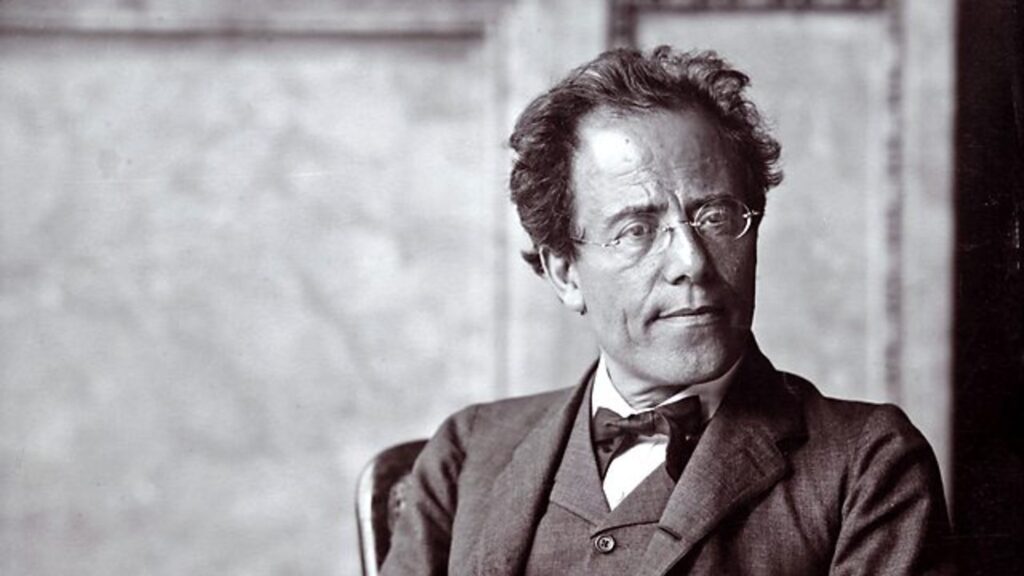
ADVERTISEMENT - CONTINUE READING BELOW
Mahler demanded absolute silence from audiences during his symphonies. He isolated himself while composing and maintained strict daily schedules. Orchestra members feared his perfectionism during rehearsals. The Austrian composer controlled his environment completely whenever possible. His need for precise conditions and difficulty with collaborative aspects of music suggest autism to several music historians.
What This List Tells Us
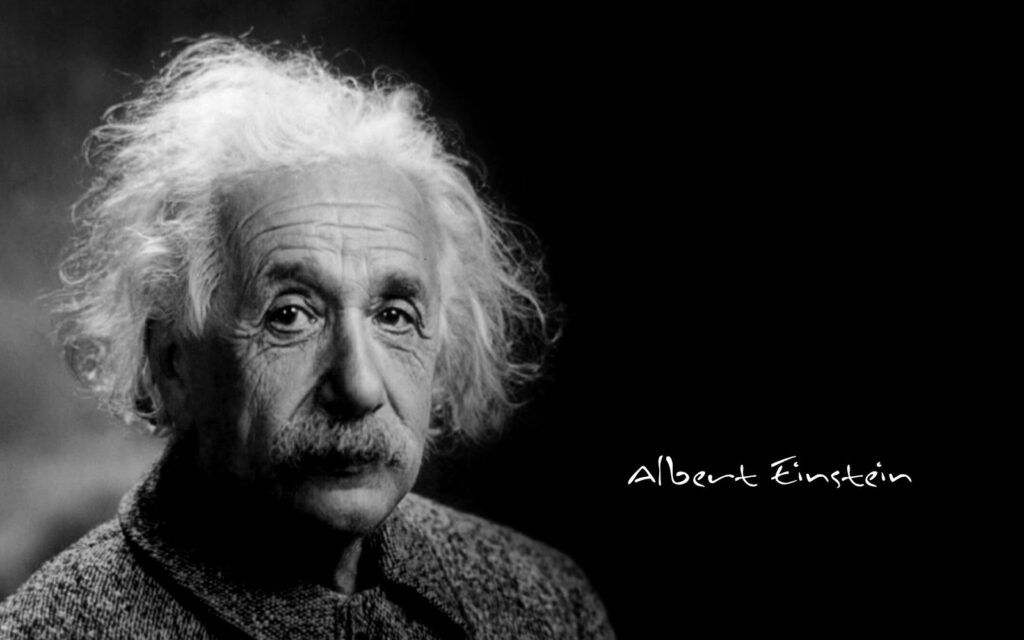
ADVERTISEMENT - CONTINUE READING BELOW
Looking back at these remarkable individuals, we see that autism traits may have contributed to their genius rather than hindered it. Their intense focus, pattern recognition, and different ways of processing information led to breakthroughs in science, art, literature, and music. Perhaps what society labeled as eccentricity was actually neurodiversity at work, changing our world through unique perspectives that neurotypical minds might never discover.


